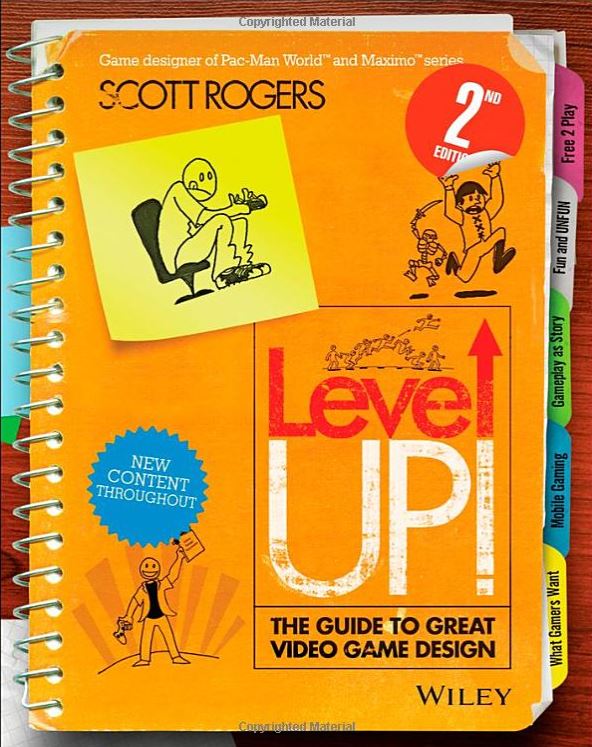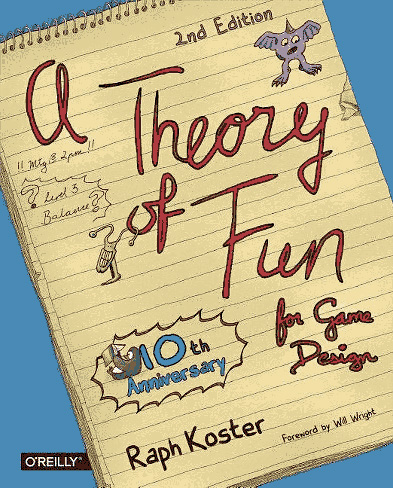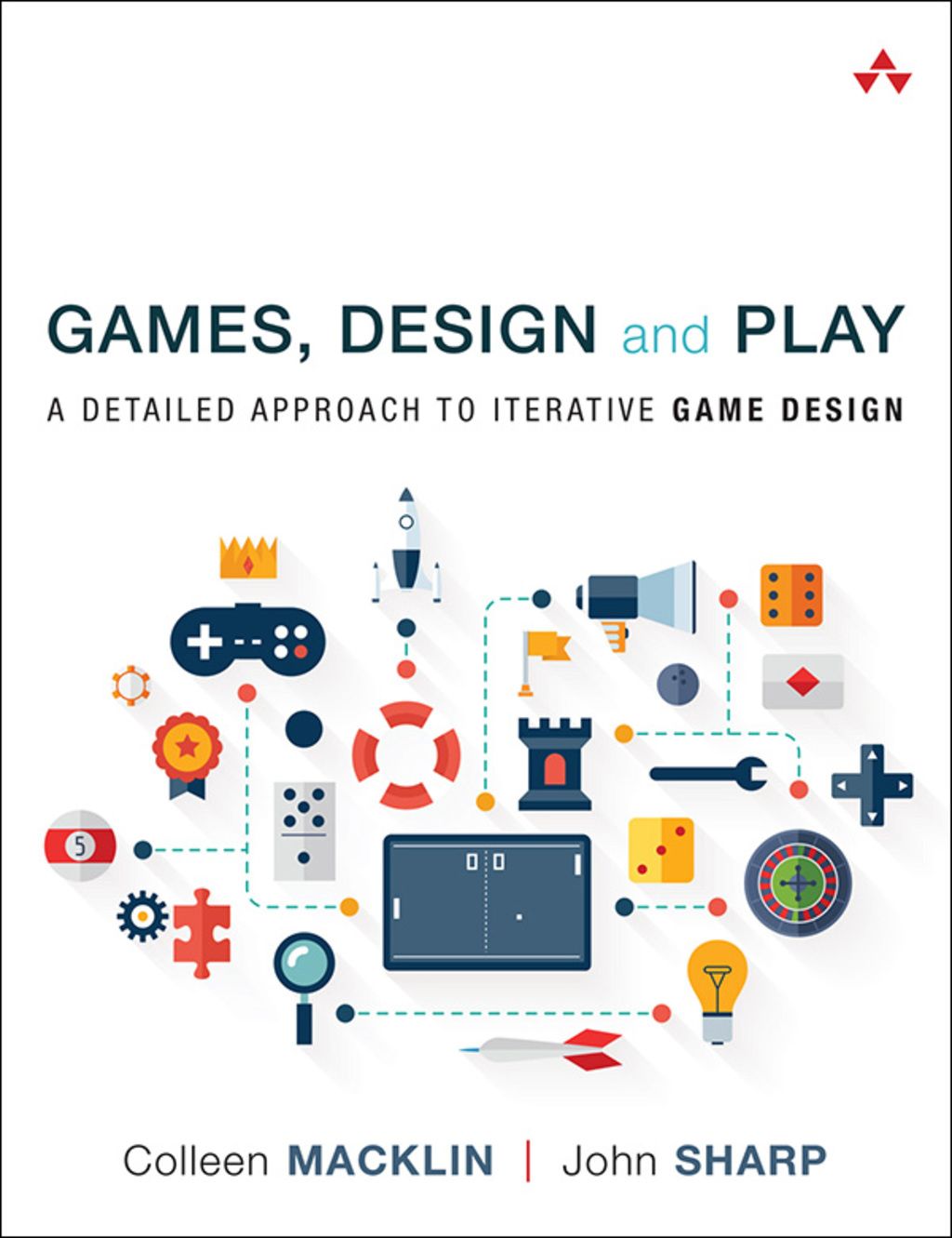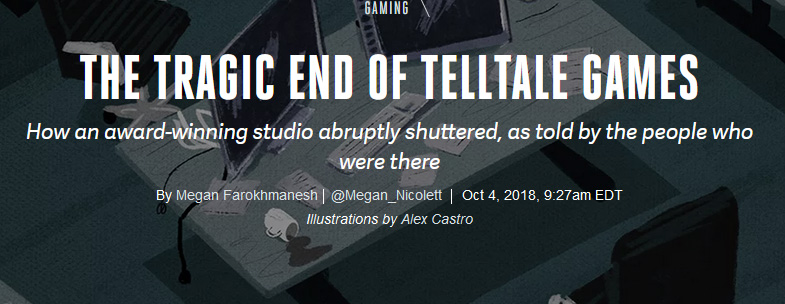FIT CTU
Adam Vesecký
vesecky.adam@gmail.com
Lecture 12
Design
Architecture of Computer Games
Game Design
At the very beginning, there was a dream. And a dreamer said: "Let's turn this dream into a game." And it was so. And it was a nightmare.
Game Design
Game design is the act of deciding what a game should be. That's it. On the surface, it sounds too simple. The voyage of discovery is not in seeking new landscapes but in having new eyes.Jesse Schell
What gamers want
- Most gamers don't know what they want until it is shown to them. (Scott Rogers)
- a good game is a unique way of structuring experience and provoking emotions
- most successful games are addictive and mood-boosting
- gamers enjoy failing, as long as hope of success is at hand
- the destiny of all games is to eventually become boring
- Essential rewards to gameplay
- satisfying work - being immersed in clearly defined activities
- experience of being successful - flow pattern
- social connection
- meaning - chance to be part of something larger than ourselves

What is important
- Great controls (Super Mario)
- Interesting visual style (ASCIIDENT)
- Excellent sound and music (Inmost)
- Captivating world (The Journey)
- Fun gameplay (Icy Tower)
- Solid level design (Braid)
- Memorable characters (Warcraft)
- Challenge & reward (Pokémon)
- Entertaining story (Mass Effect)
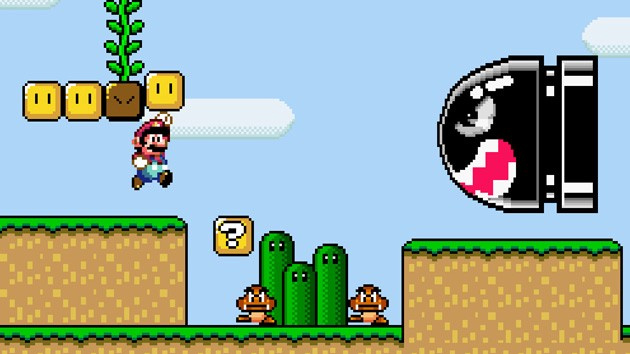
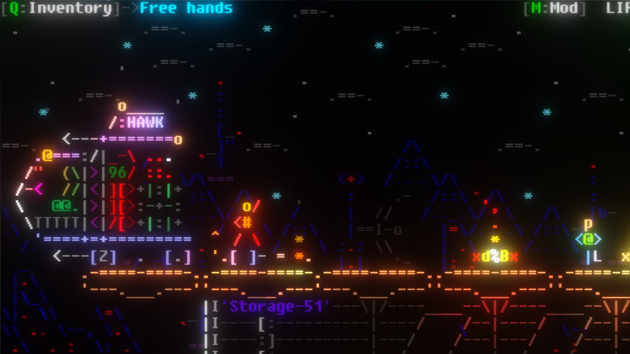

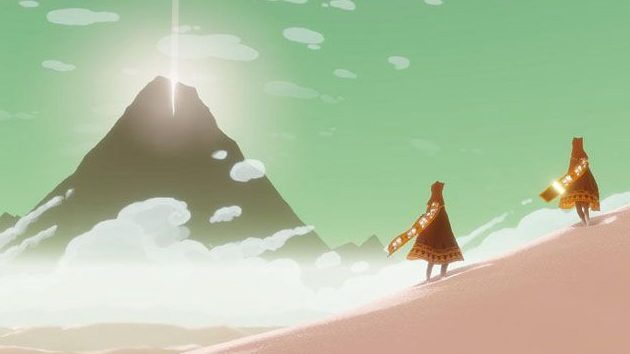
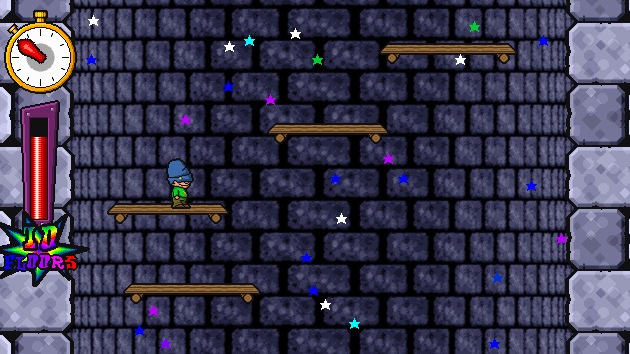
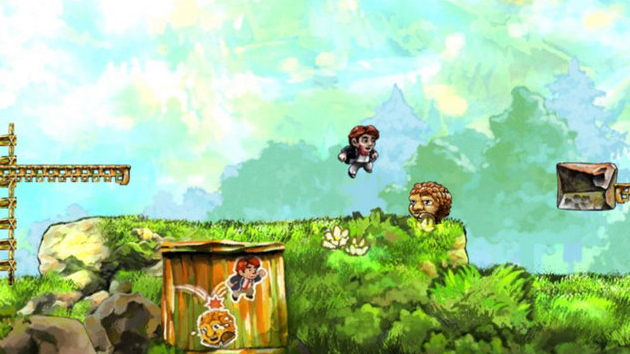
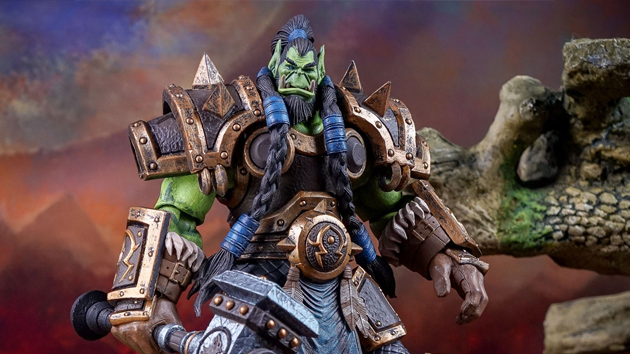
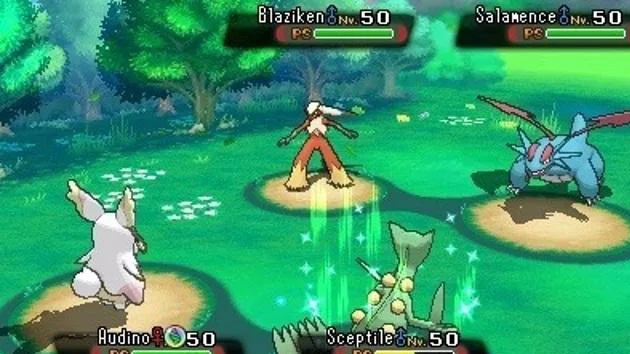
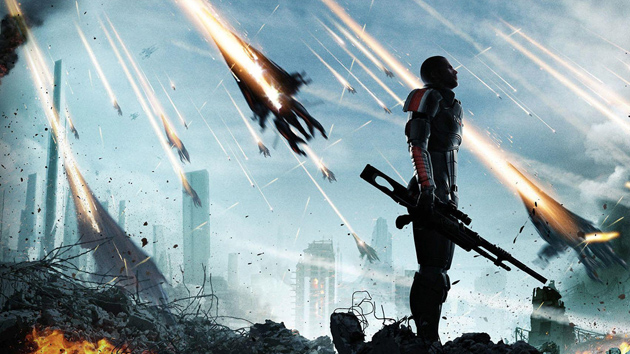
Bad design examples
- lacking autosaves
- unnecessary waiting
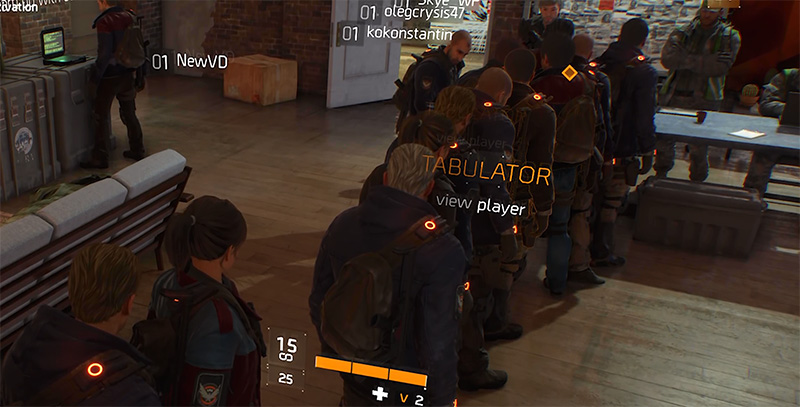
- unskippable cutscenes
- senseless dialogues
- changes of gameplay style
- invisible walls

- lack of a mini-map
- over-reliance on QTE (quick-time events)
- lack of a fast travel system in open-world game
- NPCs who walk slowly to an objective
- long-distance checkpoints
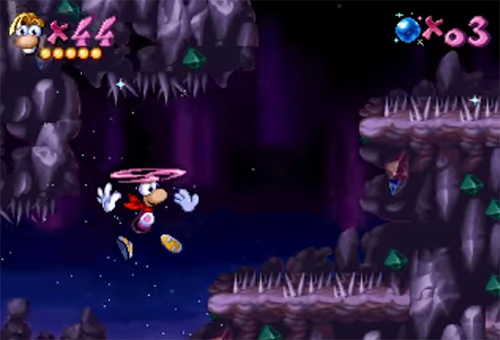
- no meaningful outcome when choices are presented
- repetitive gameplay with little diversity
Game Design Building Blocks
- constraint - putting limits on actions and interactions
- direct actions - immediate interactions with objects
- indirect actions - occur without direct contact
- goals - give shape and purpose
- challenge - balance of reward (flow pattern)
- skill - degree to which a player should learn an action
- strategy - ability to determine the best ways for actions
- chance and uncertainty - unpredictable events
- decision-making and feedback
- abstraction - of real-world activities
- theme - tightly integrated with the game's goals
- storytelling - gives clarity to goals
- context of play - where the game is played and by whom
Game Design Document
A design document is a bible from which the producer preaches the goal, through which the designers reflect their ideas. Gamasutra (1999)
A design document should be just long enough to accurately describe what is going on in the game. Scott Rogers (2010)
A design document is the blueprint from which a game is to be built. Game Developer Blog (2016)
Game Design Document - Content
- working title
- description of play experience
- basic elements (characters)
- gameplay, goals, intended mechanics
- design hooks
- interface and controls
- game flow - series of schematics
- level design
- technical overview
- story, campaigns, modes (DM, CTF, TDM,...)
- target audience
- ESRB/PEGI ratings
- competitive products
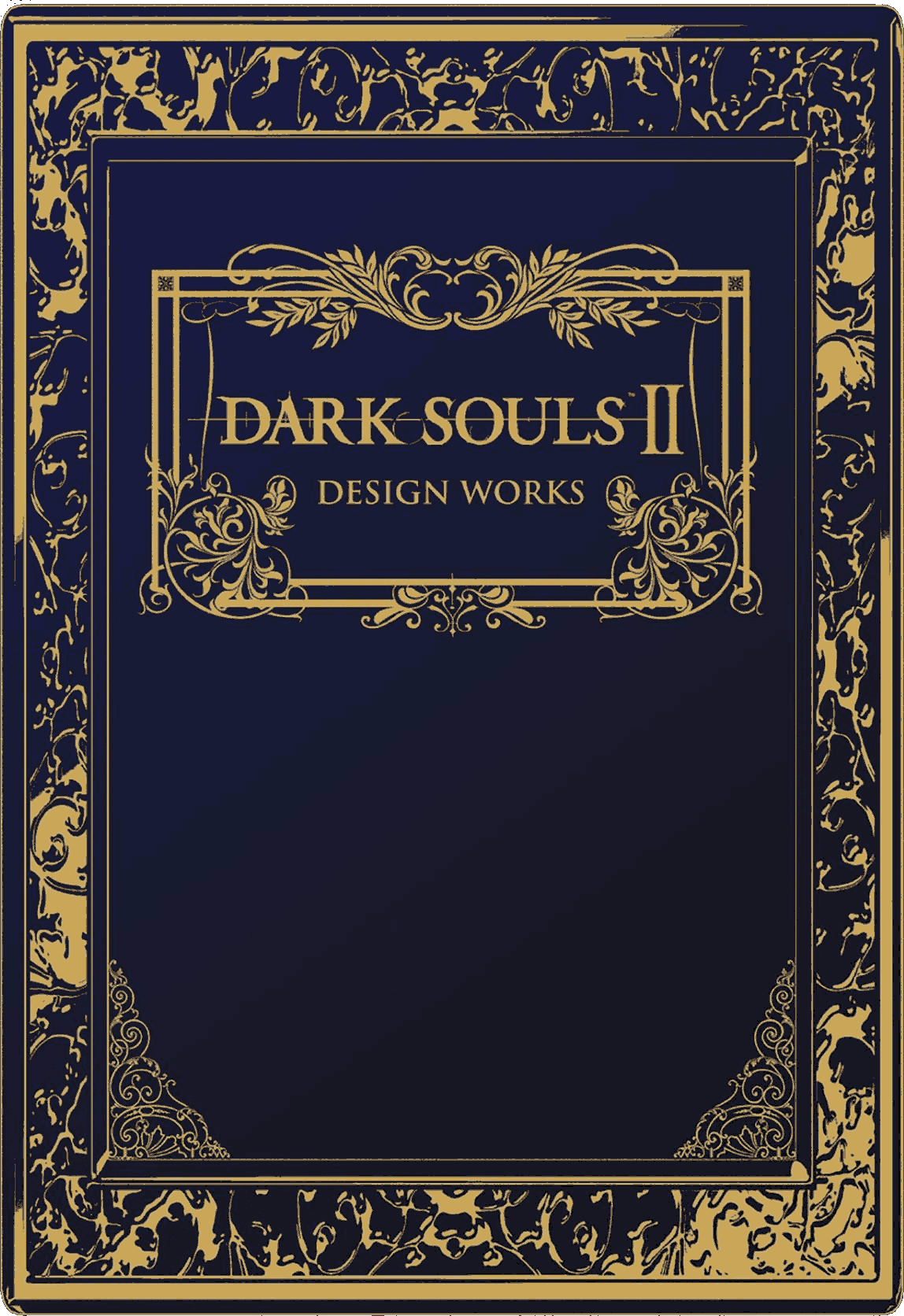
Example: Prince of Persia 2
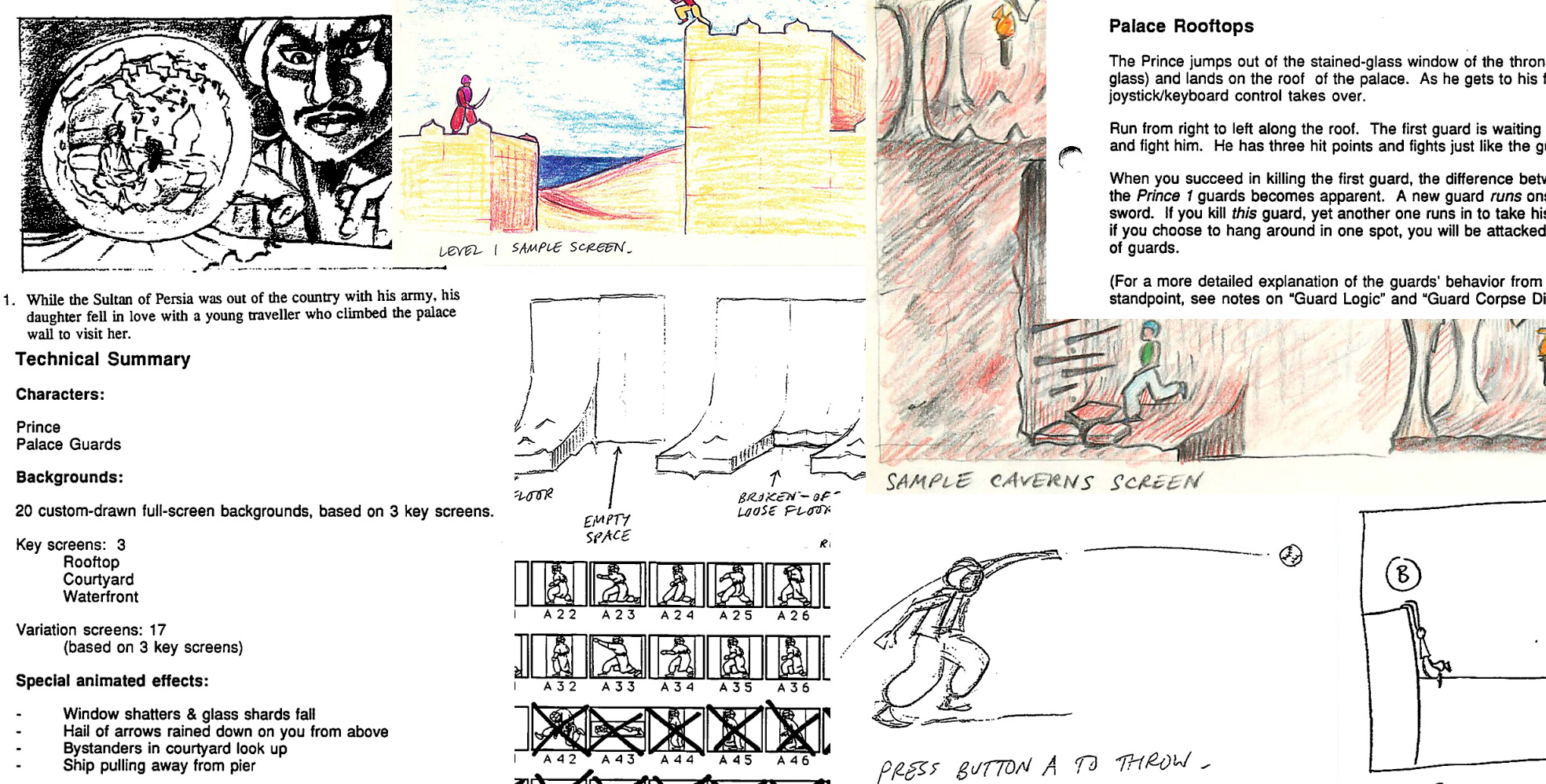
Iterative game design process
Mark Cerny's method
- half of the development time is spent on pre-production => iterative prototyping
- by the end, you should come out with two good levels that represent the overall quality
Iterative game design process
- game design is a highly iterative process
- conceptualize - develop an idea and its play experience - written in design document
- prototype - make some aspect of the game's design into a playable form
- playtest - have the players see what you have made
- evaluation - capture feedback, take notes, videos, brainstorm, and start another iteration
Design hooks
- unique qualities and characteristics a game's designer wants to embody in the game
- the main selling points that make the game stand out
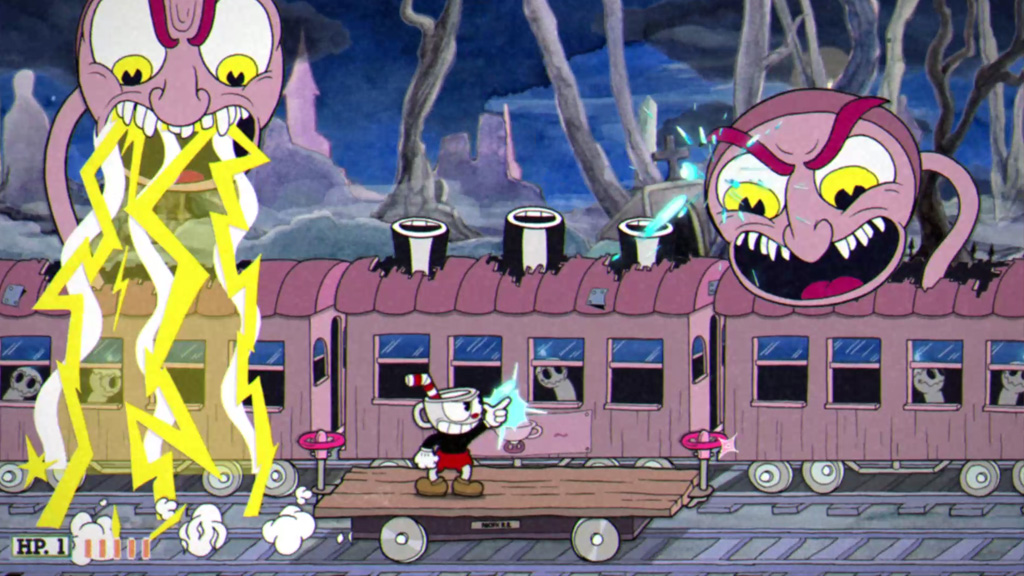
Cuphead
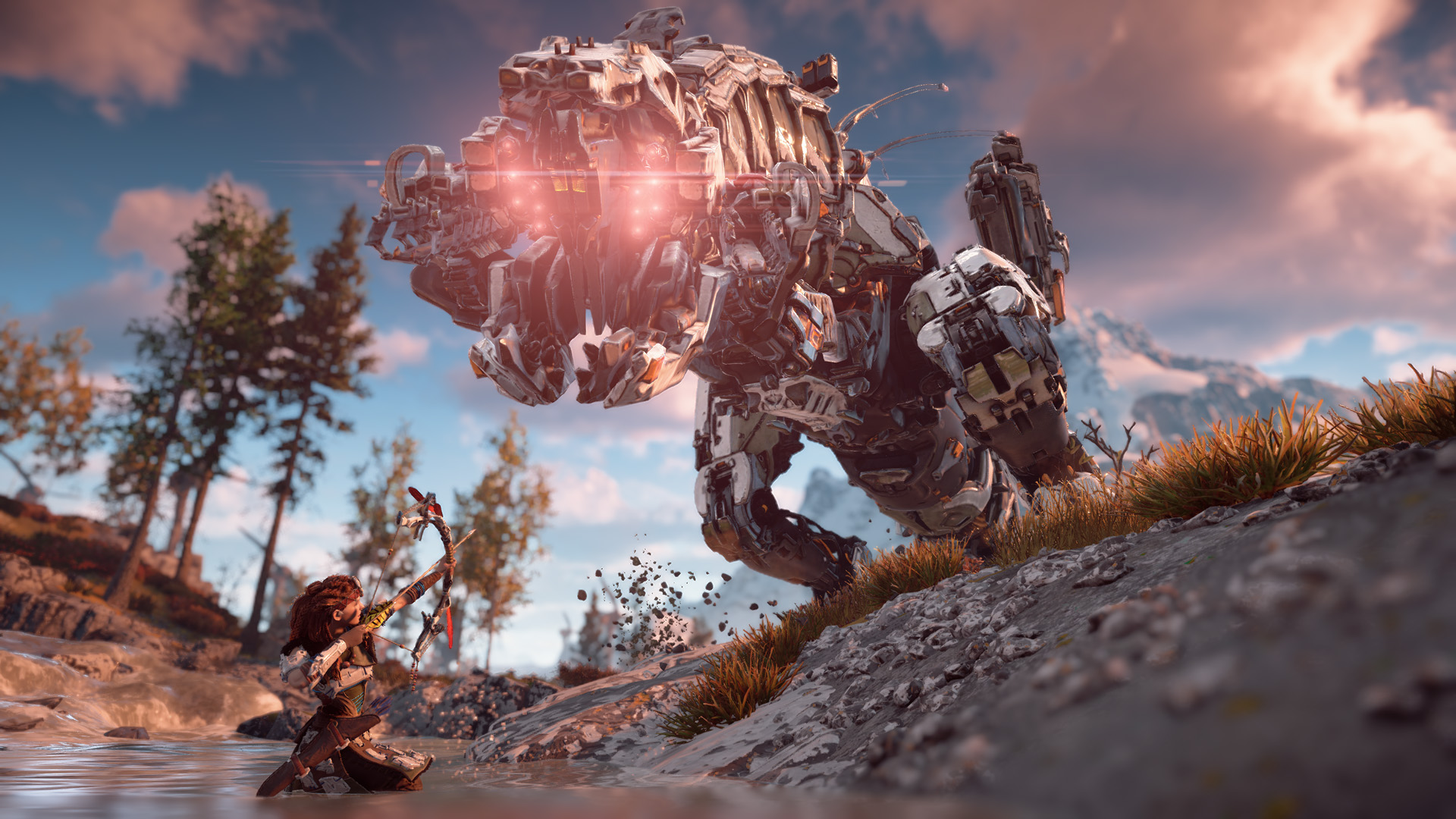
Horizon: Zero Dawn
Design structures
- Sketches

- Story and script
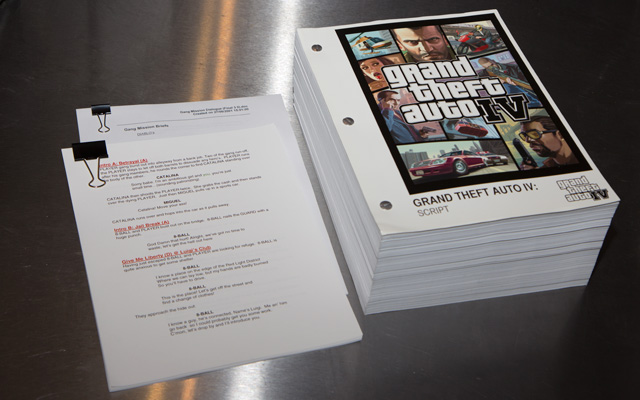
- Tables (skills, abilities, upgrades)
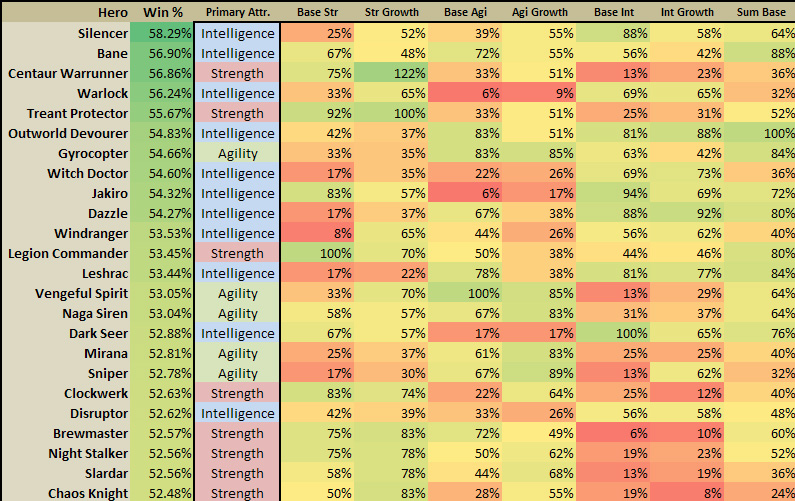
- Level mockups, puzzles,...
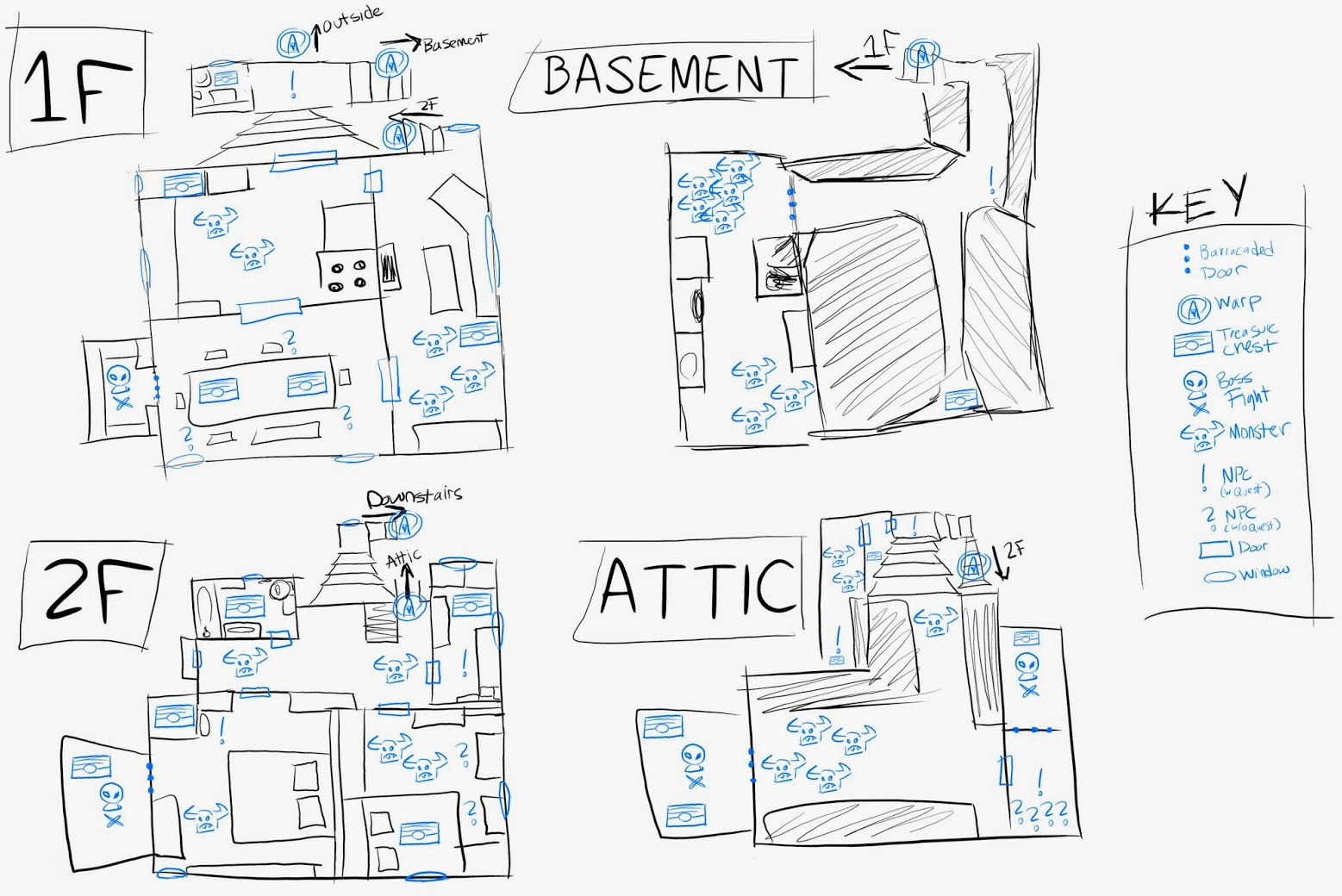
- Game map
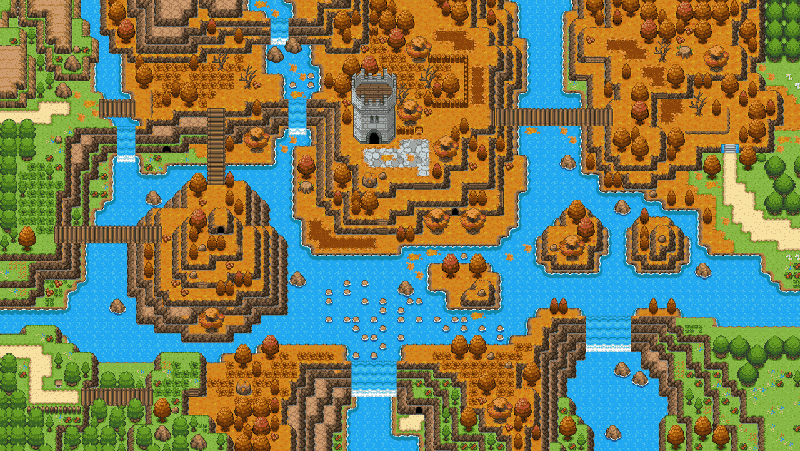
Hero
- very important and often unjustly neglected element of games
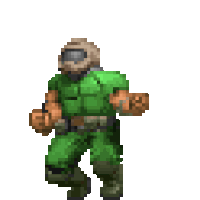

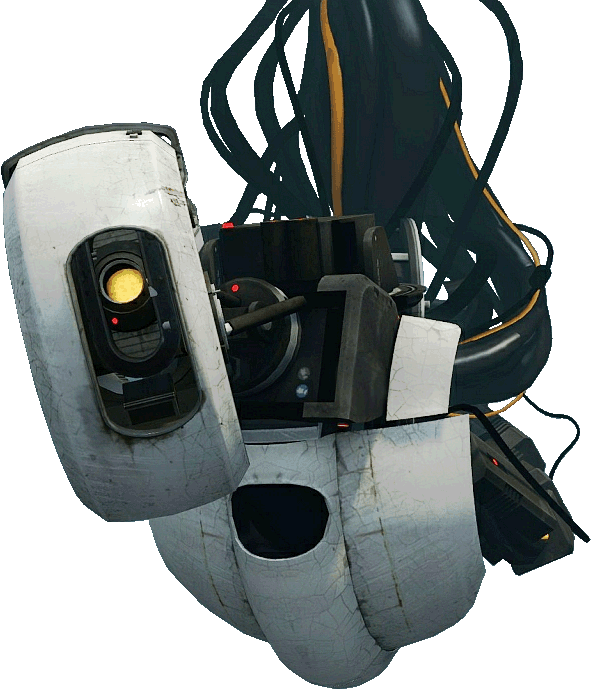


- main attributes: name, appearance, facial proportions, movement, humanity
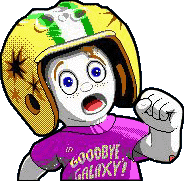
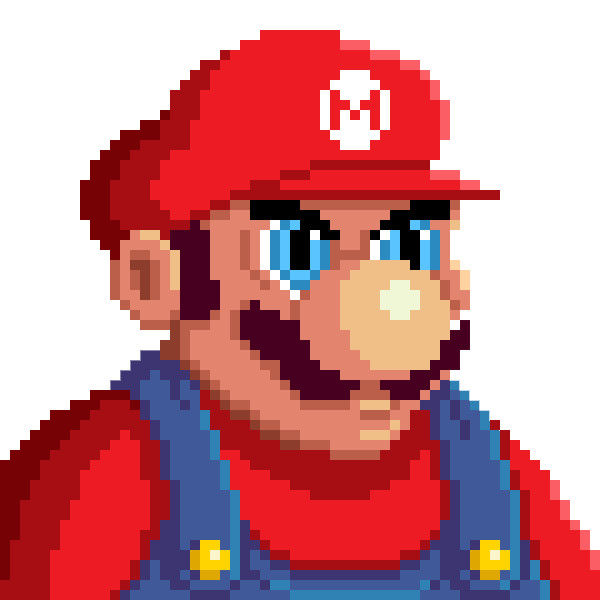
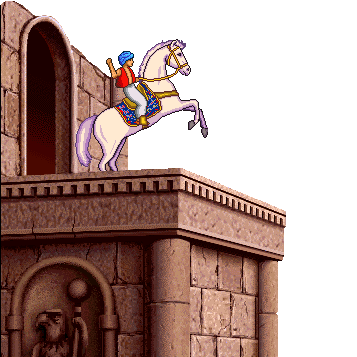
- archetypes: humorous character, heroic character, villain character
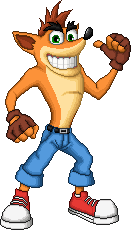
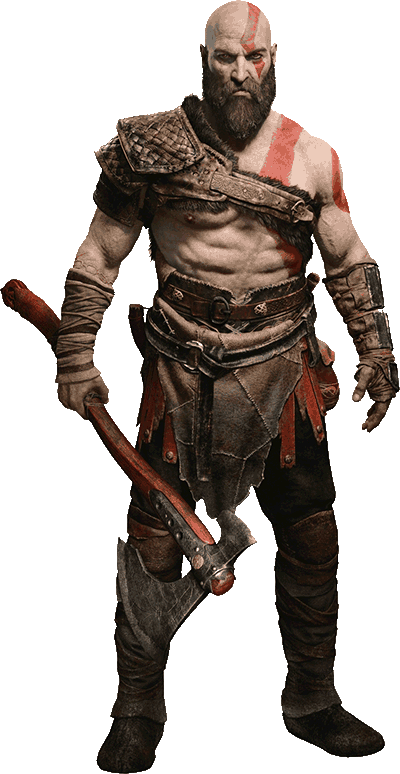
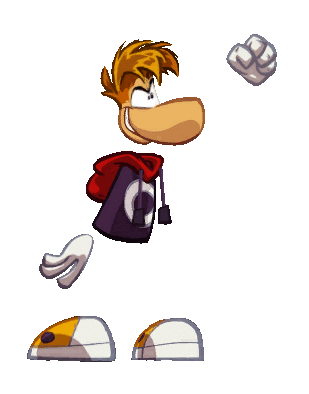
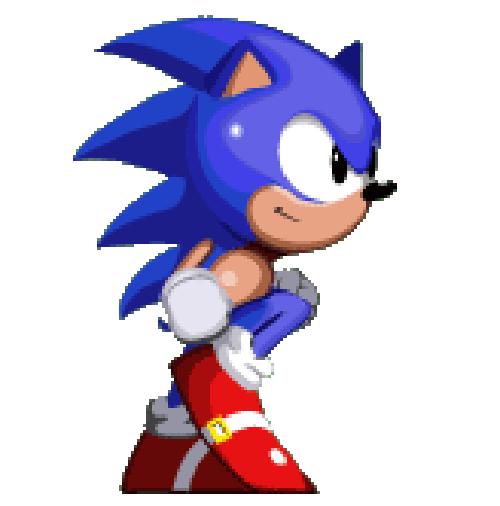
Story
- a story is a background aspect of a gameplay and gameplay is a medium used to tell a story
- good gameplay can overshadow a terrible story
- good story can't really overshadow a terrible gameplay
- some games just don't need a story
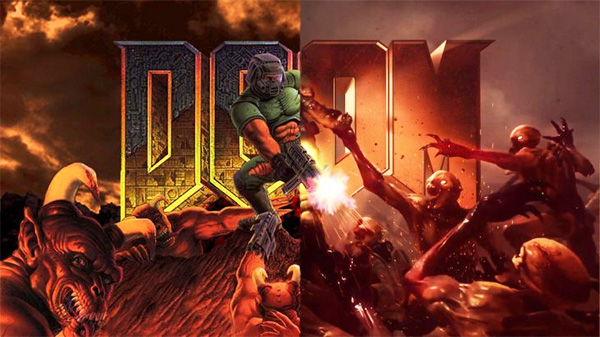
Doom
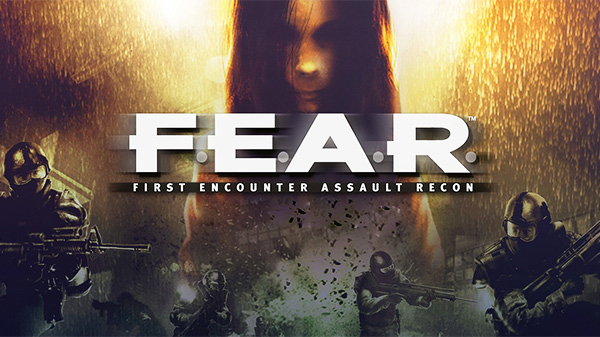
F.E.A.R.
Worldbuilding
- responsibility of the narrative designer
- questions like who, what, when, where, why, how
- only a small portion of the work will ever be visible to players
- honorable mention: Ultima (1980-2000)

- laid the groundwork for most RPGs
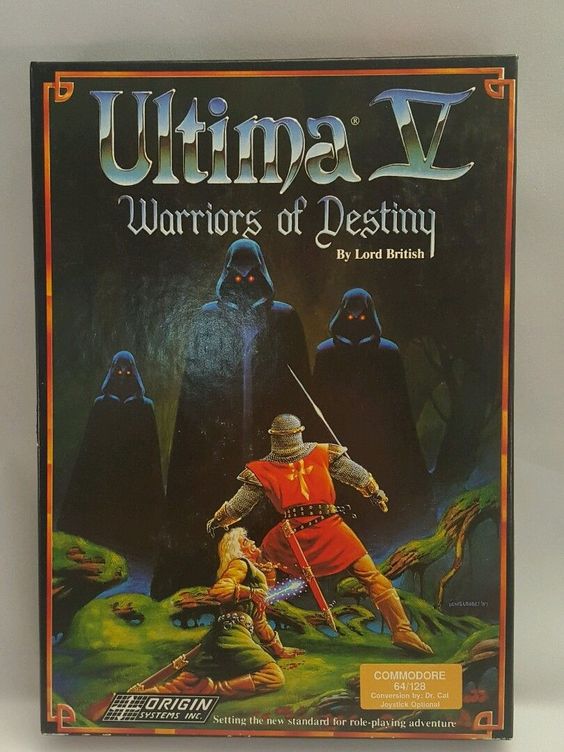

- started with a student project in 1980
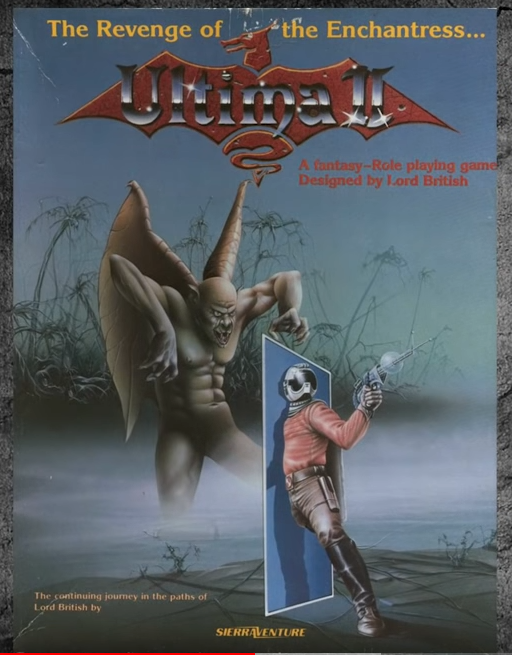
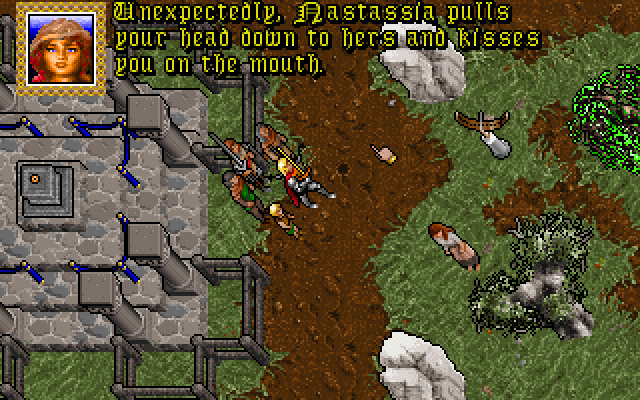
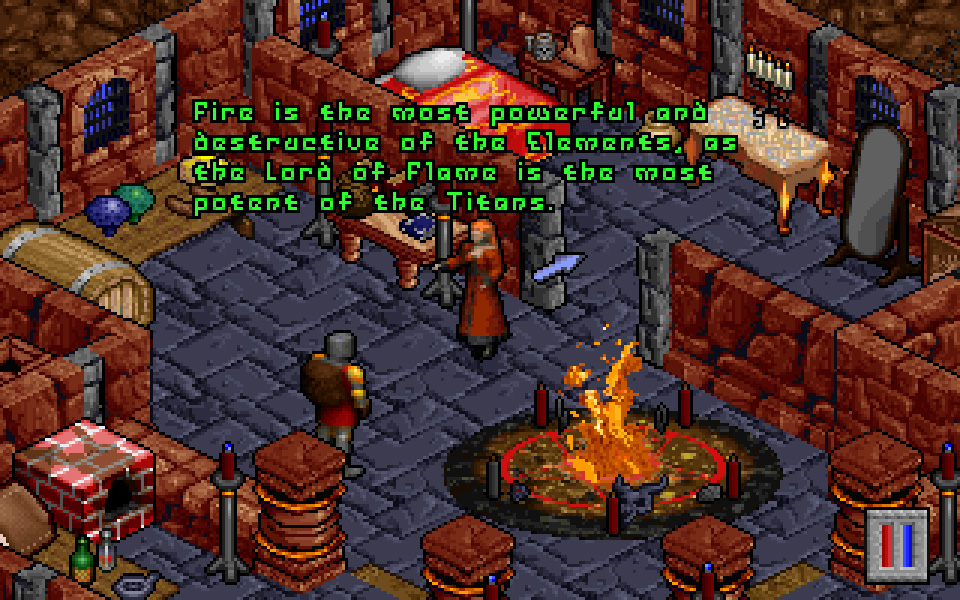
- ended with failed Ultima X project in 2003
- laid the groundwork for most RPGs
Space graphs for level design
- describe paths, items, monsters, points of interest, constraints and events
- place - elemental unit of space (room, zone)
- path - indicates that players can move freely between two places
- window - a place visible from another place, but not reachable from there
- lock - place that is not accessible until activated (with a key), can be conditional
- key - key to a lock
- valve - connects two places, only one direction
Example: Level structure
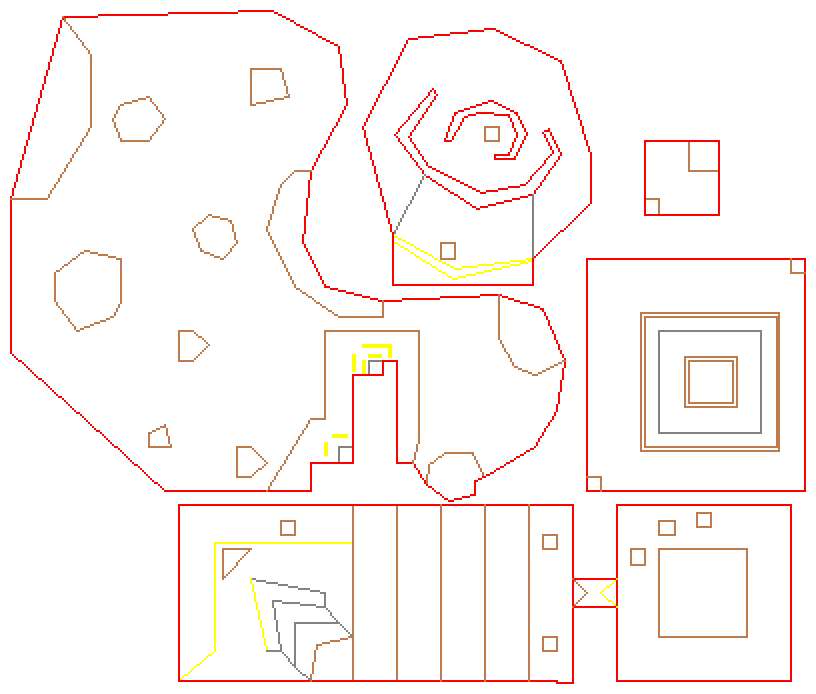
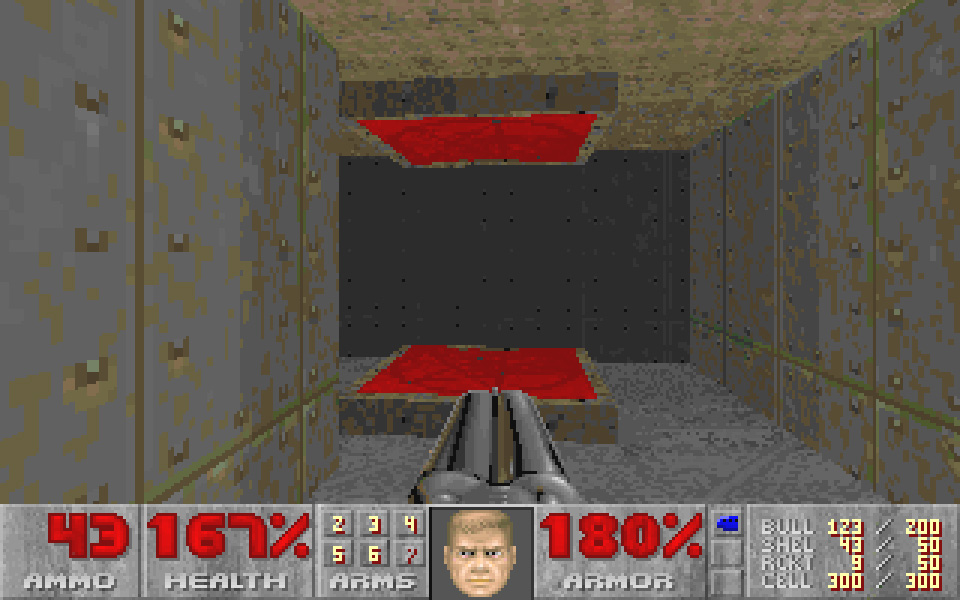
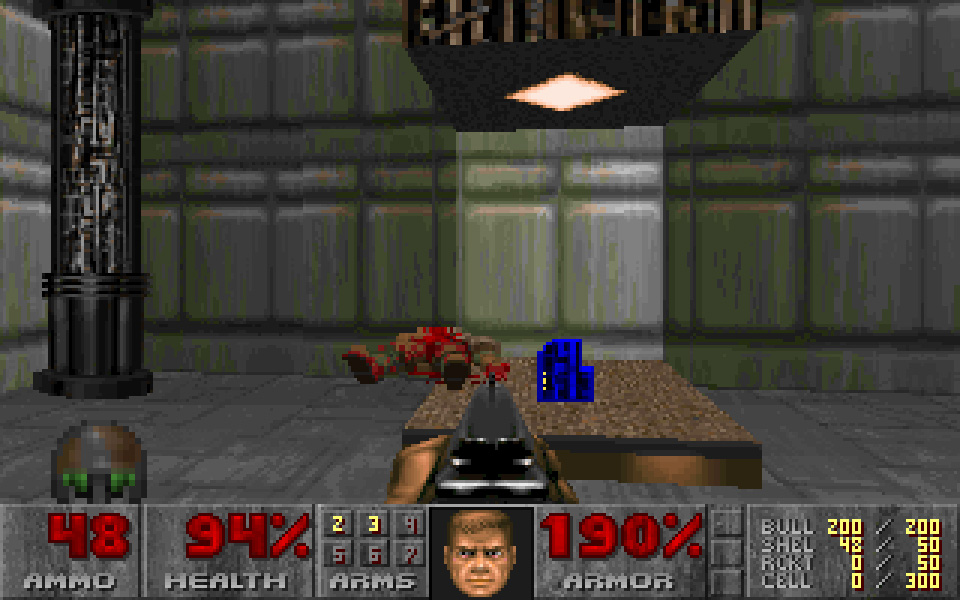
Example: Window element
- window - a place visible from another place, but not directly reachable
- may require certain skills the avatar have not yet acquired
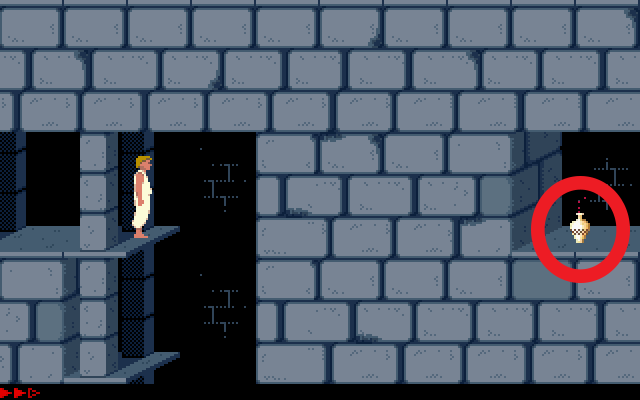
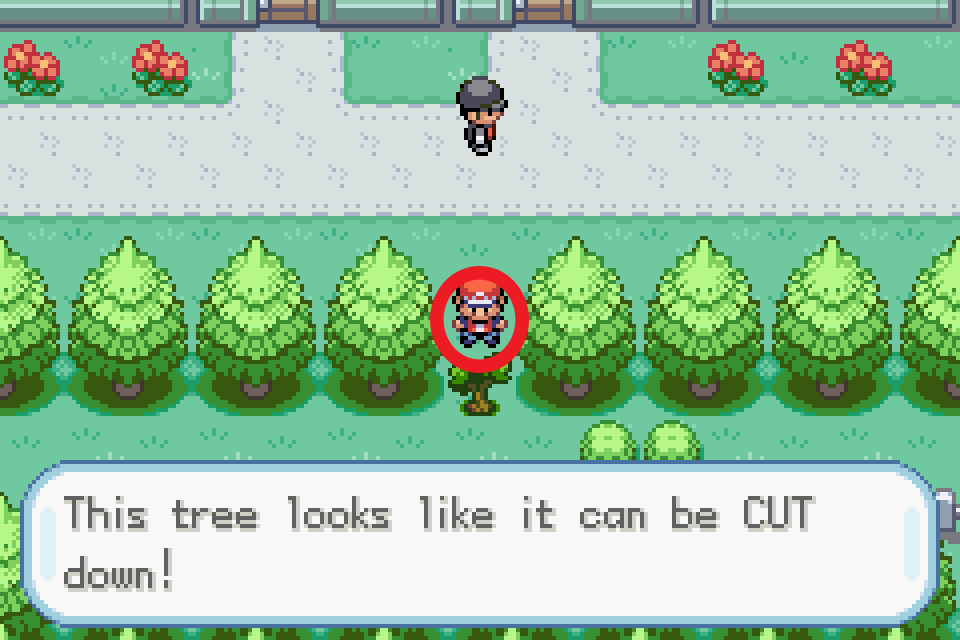
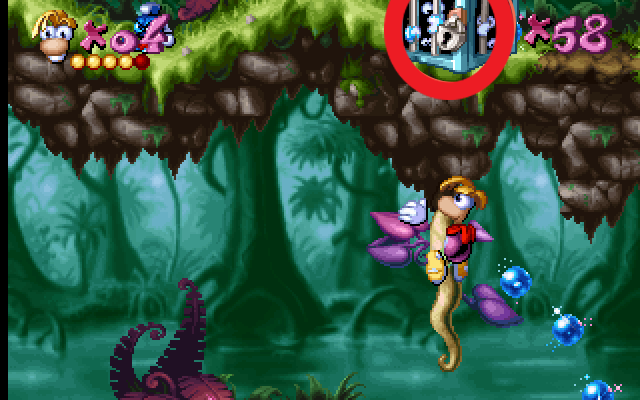
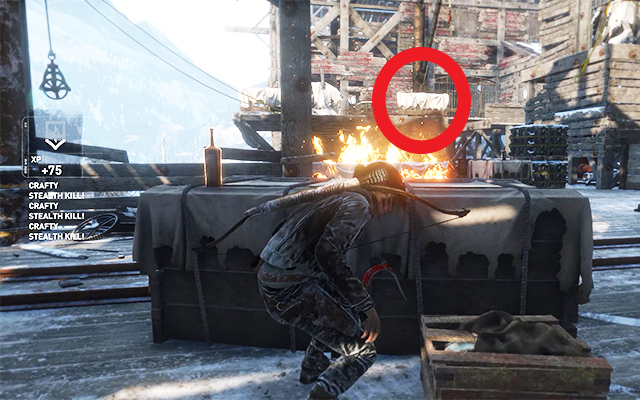
Game Development
Game categories
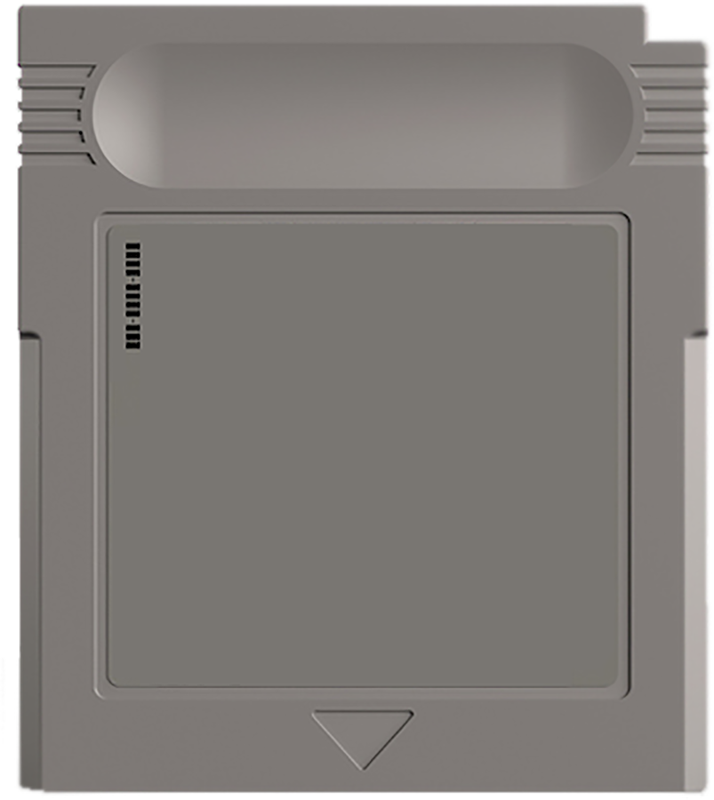
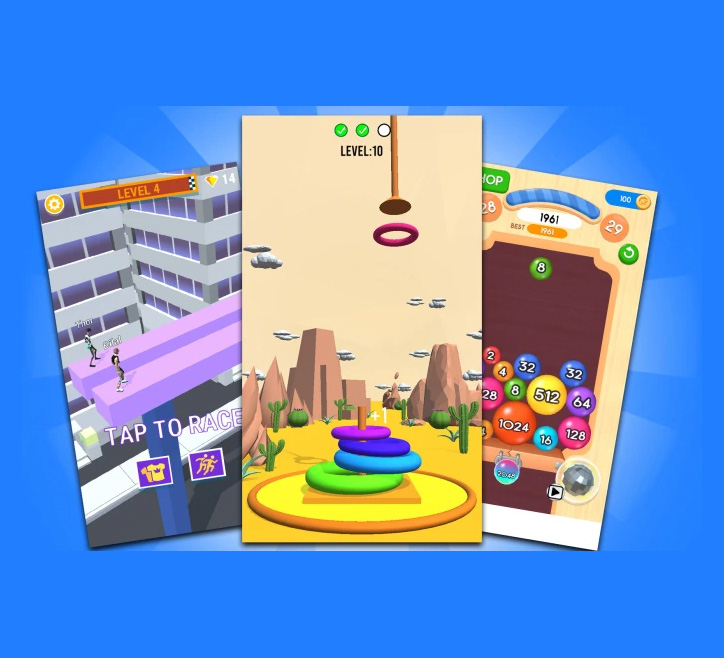

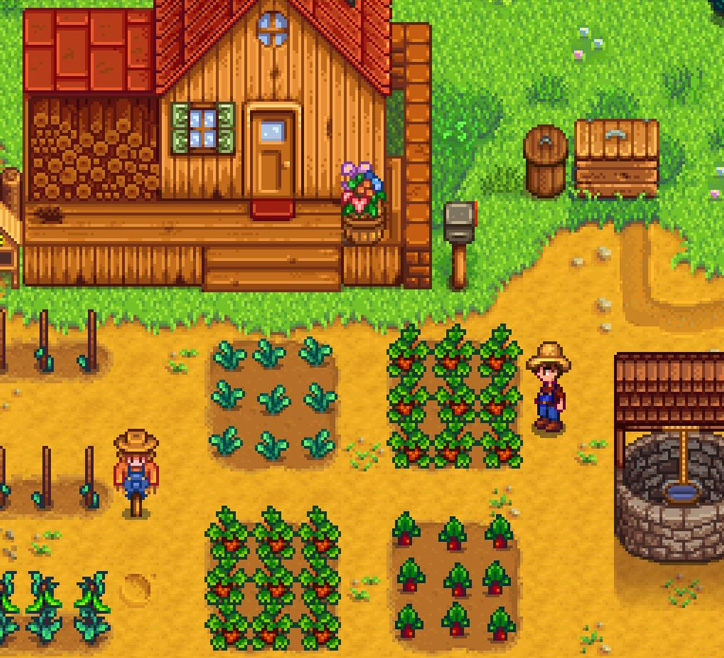

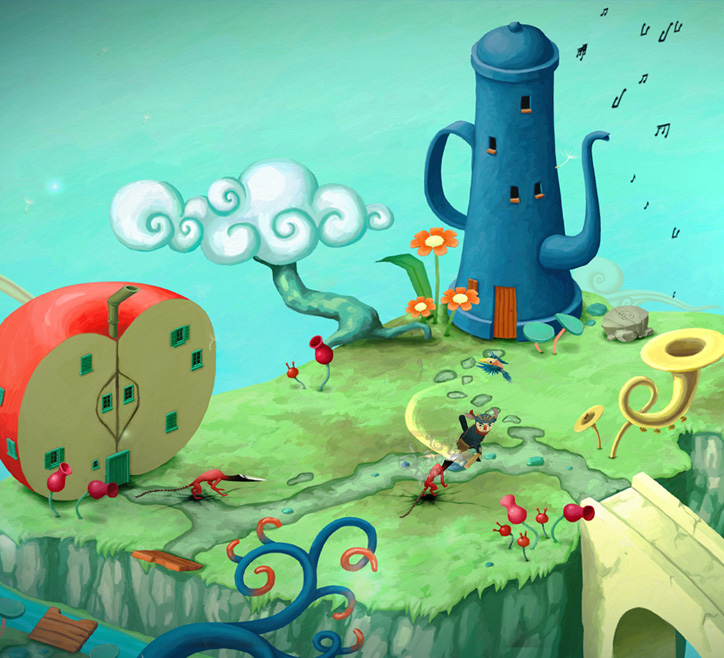

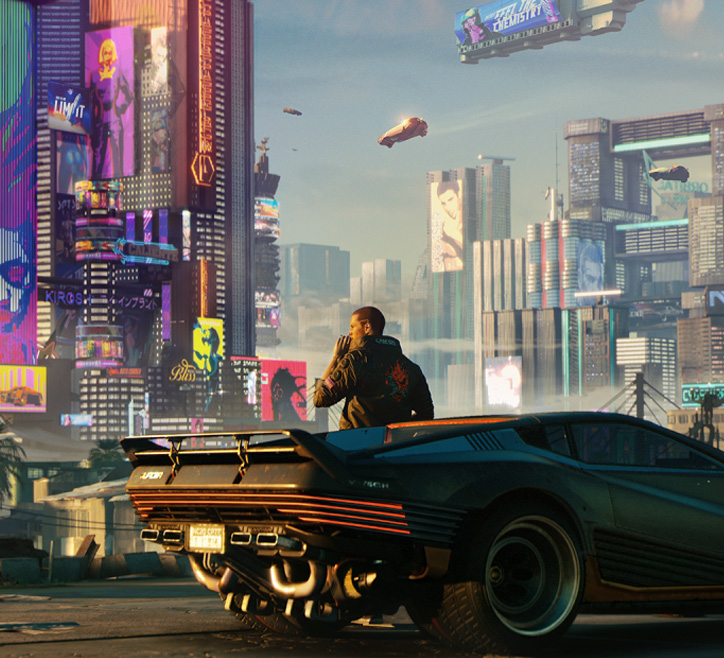
Game Development Professions
Developer
- writes code
- gameplay developers, tool developers, engine developers, VFX developers, scripters,...
Game Designer
- determination of the goals, gameplay and objects
- story designers, gameplay designers, level designers, narrative designers
Artist
- create everything what players see
- sketches, paintings, 3D models, character animations, credit screen, interface
- 3D modelers, texture artists, lighting artists, animators, cutscene animators, rigging specialists,...
Sound specialists
- score composers, sound designers, sound specialists,...
QA
- planning, organizing, running, and documenting playtests
Other staff
- executive producer, technical director, project managers, marketing department, PR,...
Game development team size
- Prince of Persia (1989): 4
- Doom (1993): 9
- Rayman (1995): 20
- Pokémon Ruby (2002): 77
- 11 developers, 21 designers, 2 scripters, 4 map designers, 7 environment designers, 14 Pokémon designers, 4 parametric designers, 6 scenarists, 4 artists, 4 audio specialists
- Unreal Tournament 3 (2008): 83
- 30 developers, 16 level designers, 30 artists, 7 audio specialists
- Tomb Raider (2013): 105
- 32 developers, 21 level designers, 2 camera designers, 30 artists, 14 animators, 6 audio specialists
- Kingdom Come: Deliverance (2018): 154
- Wolfenstein: New Collosus (2018): 231
- 26 developers, 24 level designers, 75 artists, 28 animators, 5 audio specialists, 70 people for facial animation tracking
- Devil May Cry V (2019): 251
Game development cost
- Hyper casual games: < 500 hours of work
- Casual games: < 5000 hours of work
- Indie games: < 100 000 hours of work
- AAA games: 100 000+ hours of work
Games made by one person

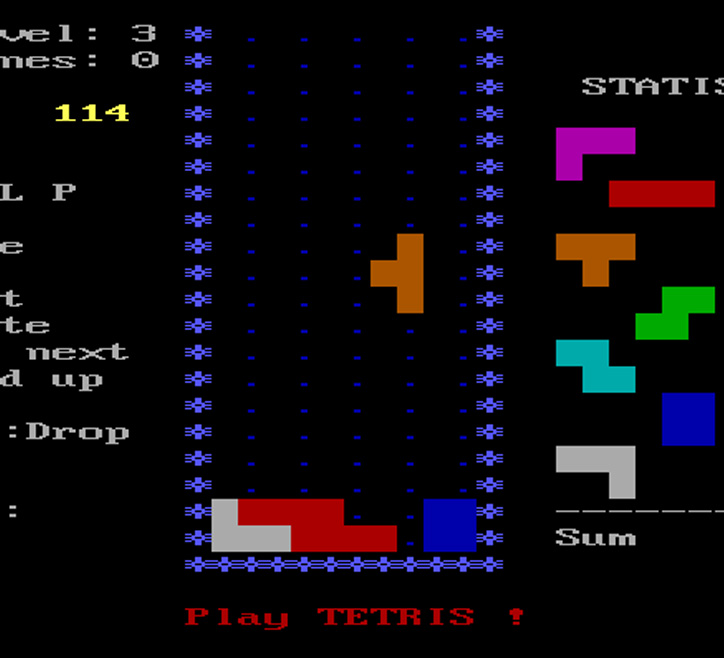

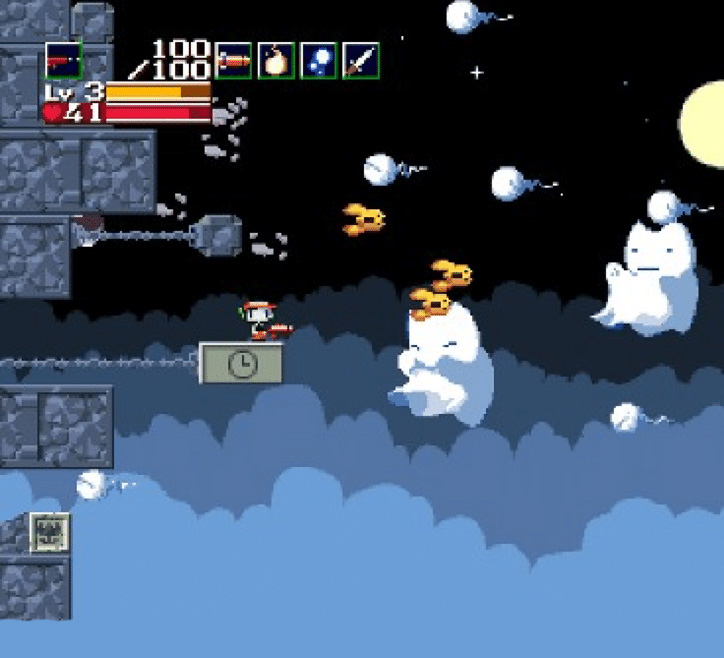

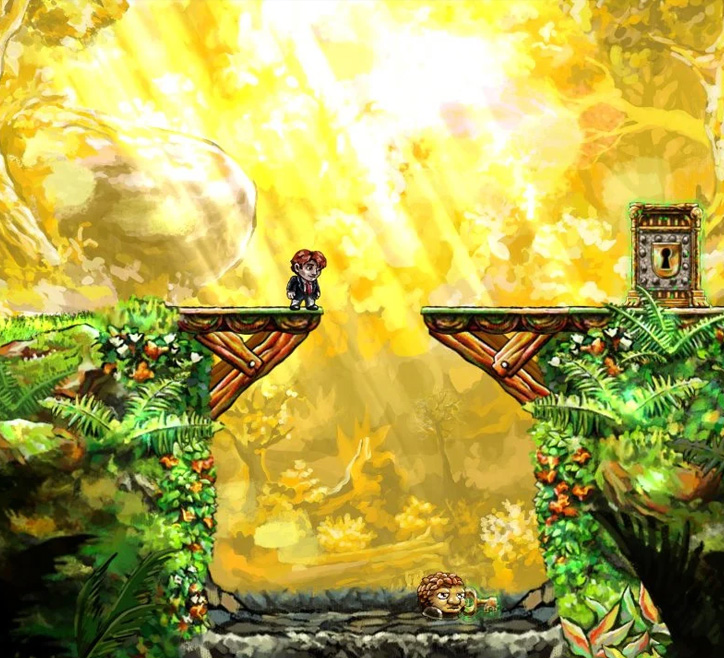

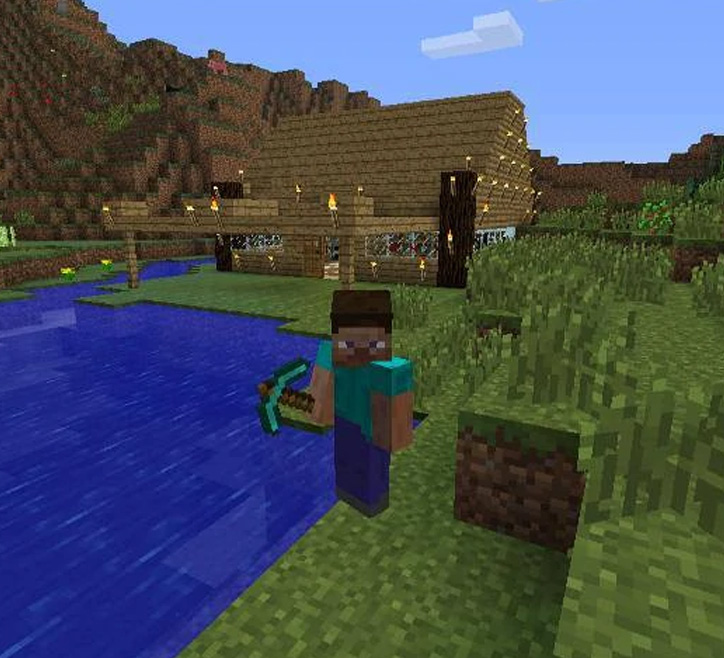

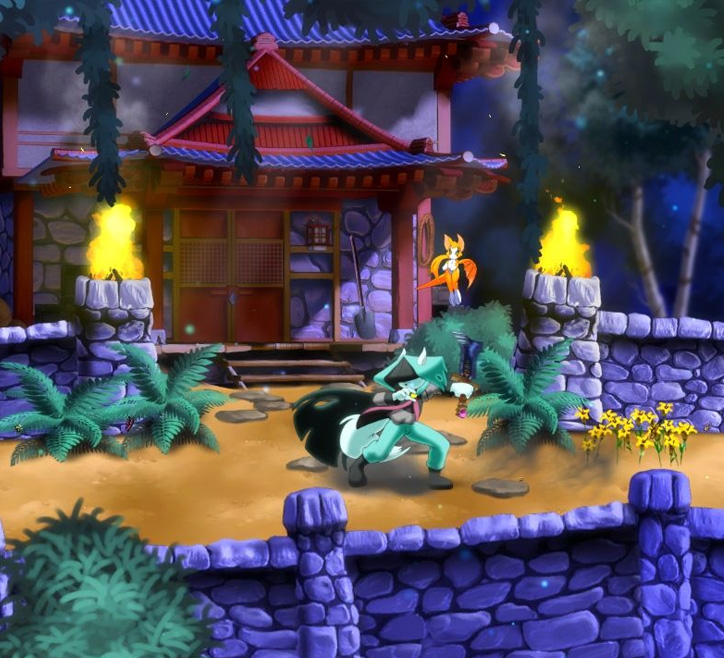

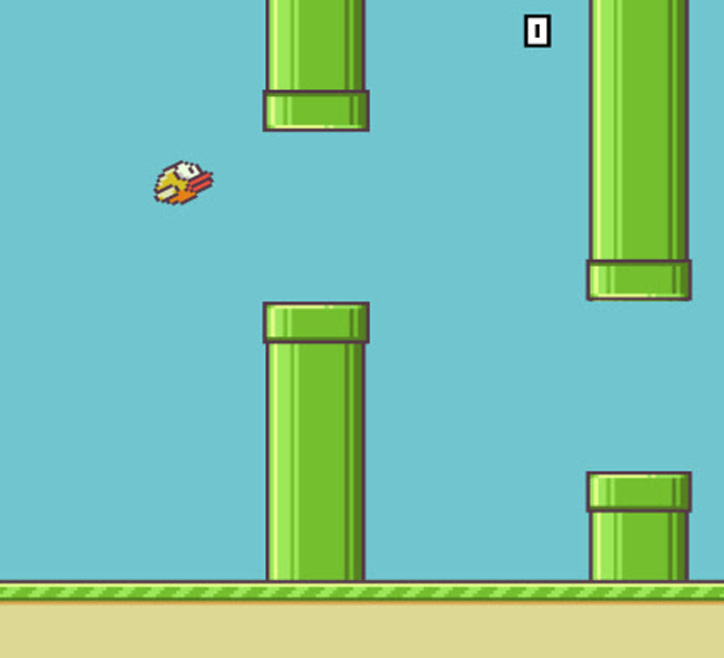

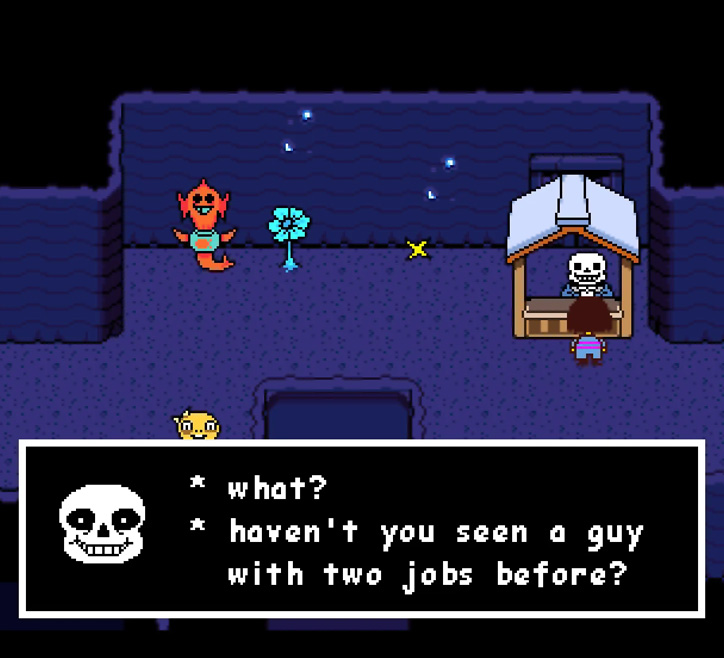

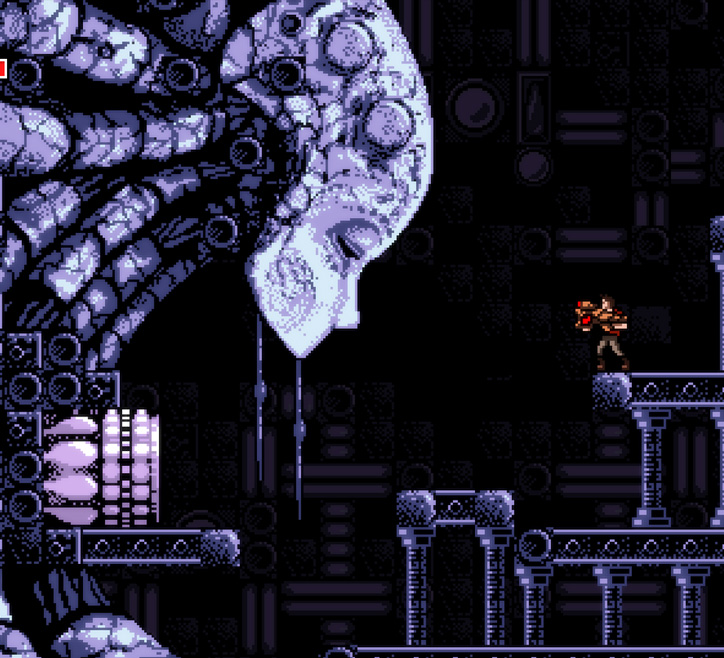
Game industry failures

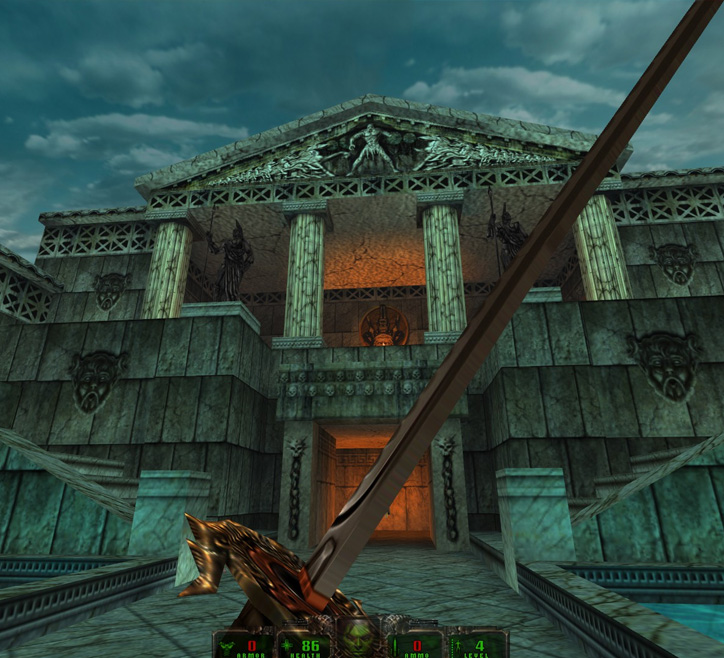

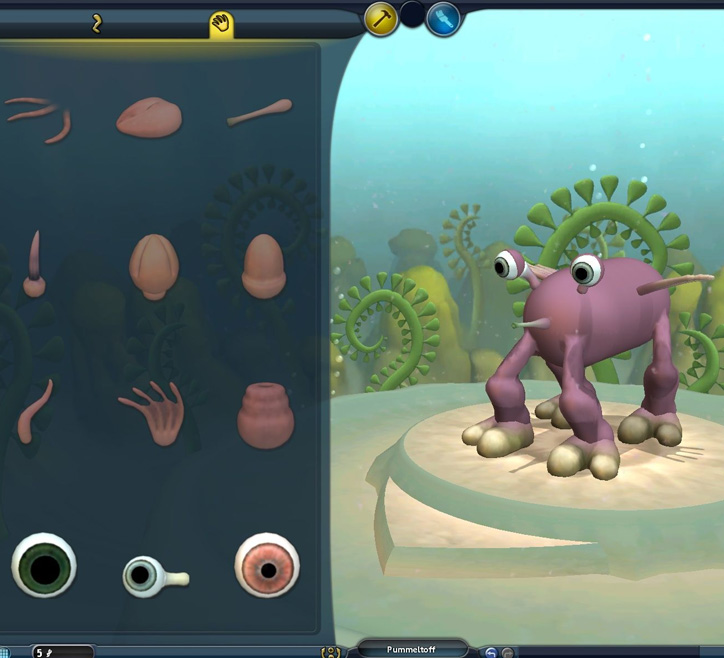

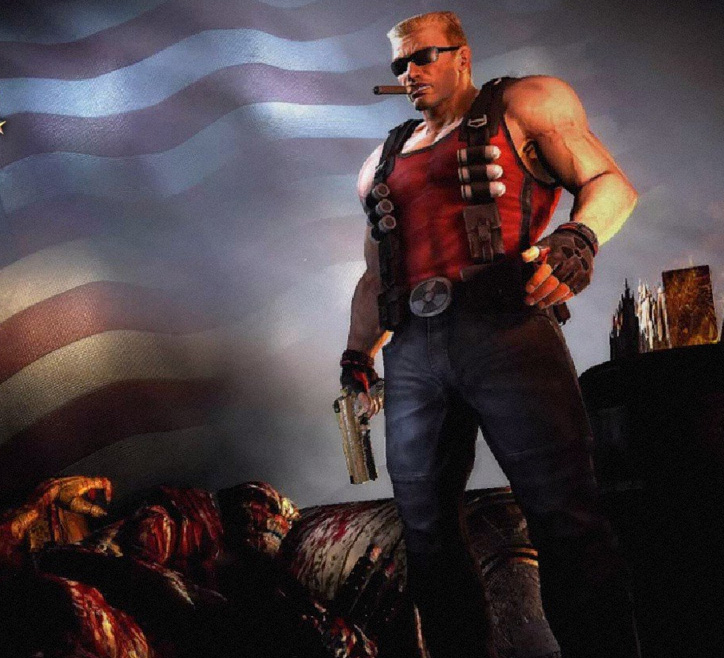

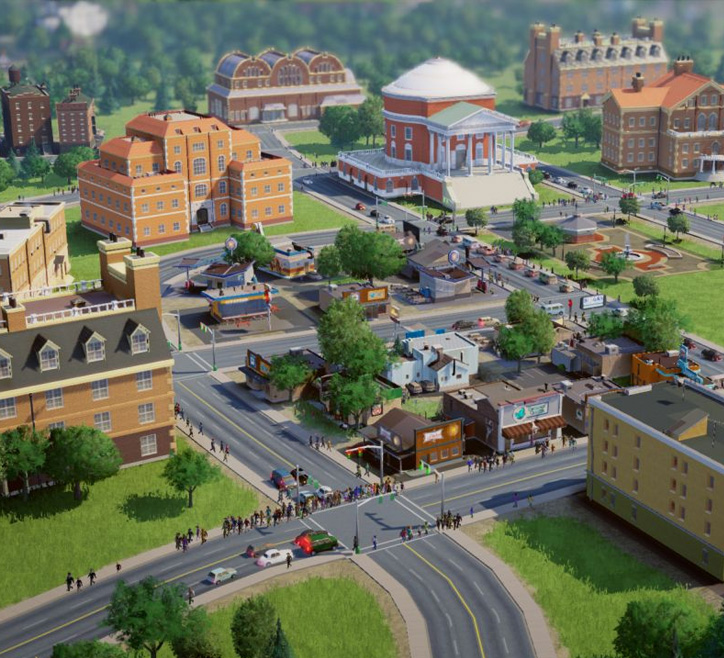
Indiepocalypse
Indie Games
Indie game is a video game that is often created without a financial support of a publisher.
Indie games are developed by individuals, small teams or small independent companies, having little to no budget available.
Indie games are games that are smaller in size, less taxing on hardware and focusing mostly on art design.
Indie games evolution
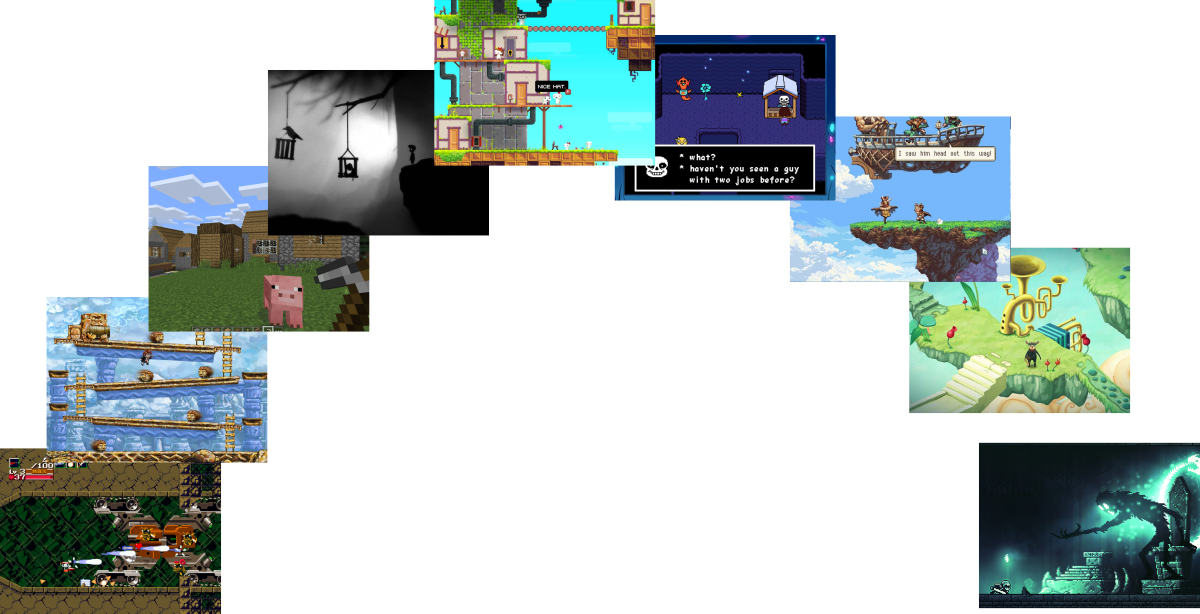
AAA games vs INDIE games
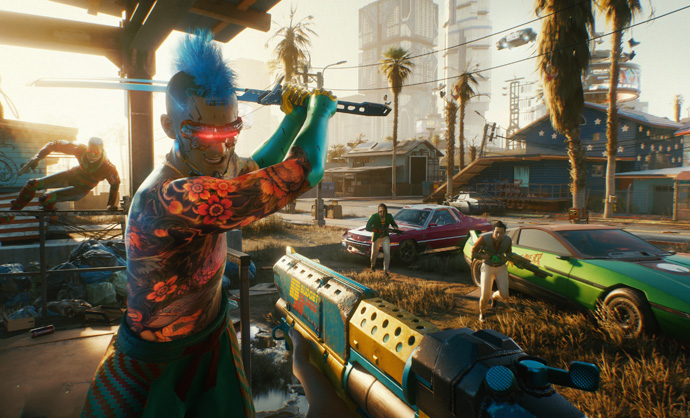
Cutting-edge graphics

Large studios
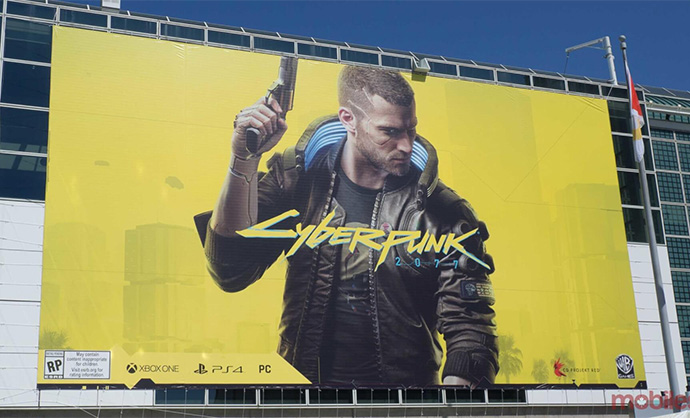
Massive campaigns
VS
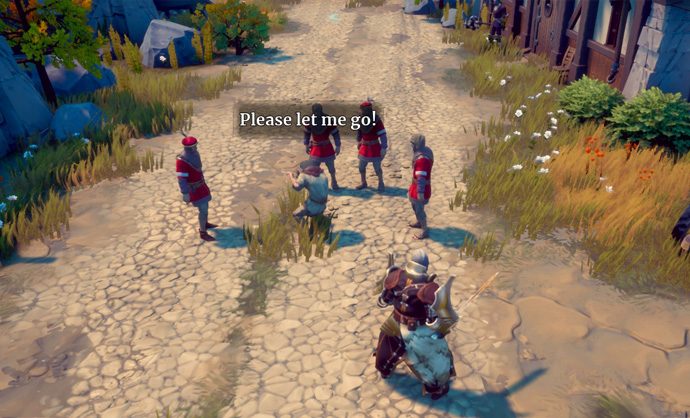
Modest graphics

Small office
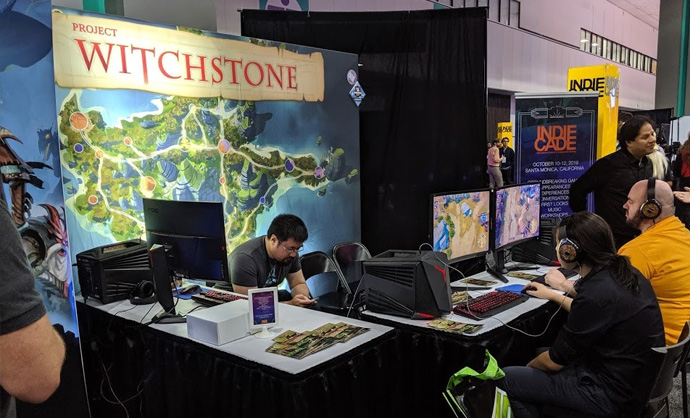
Conference tours
AAA vs Indie
Indie game developer
- must span a huge number of various subject areas
- the less resources you have, the more creative you need to be
AAA game developer
- specialized in a few areas
- making AAA is about delegating tasks to huge teams
- there isn't a lot of space for own expression
- many AAA devs eventually go indie
- Jade Raymond - oversaw Assassin's Creed, left Ubisoft in 2014
- Cliff Bleszinski - oversaw Gears of War, left Epic Games in 2012, started his own studio
- Brian Reynolds - SM Civilization designer, started his own studio
- Keiji Inafune - Mega Man designer, departed Capcom and started his own studio
- David Jaffe - directed God of War, left Sony, started his own studio
- Ken Levine - leader of BioShock development, left 2K Games in 2017
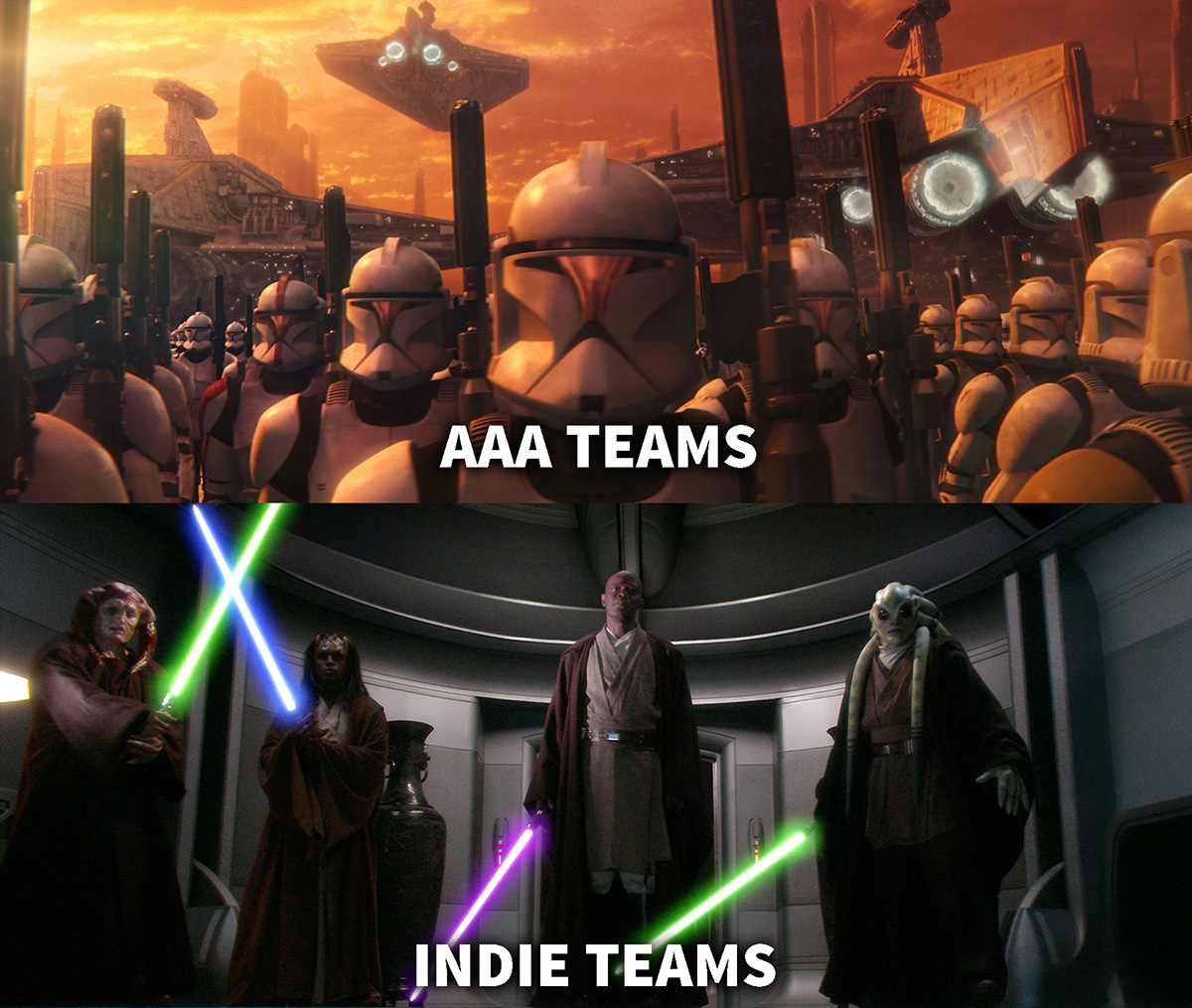
Games released on Steam
- 2013 - opening the flood gates
Global revenues
Game Industry Crisis
- in 1990s, the industry was small enough for developers to comp up with anything
- we have 2.7 billion gamers across the globe
- it is easier than ever to develop a game
- it is harder than ever to develop a successful game
- Issues:
- low barrier of entry (everyone can create a game, reading a tutorial)
- low median ownership (number of players per each game)
- lack of differentiation (do we need other 100 pixel-art platformers?)
- with so many games to choose from it is hard to stand out without a unique selling point
- many gamers spend their time playing a few games that are offered as a service
How to make a game
Game Developer
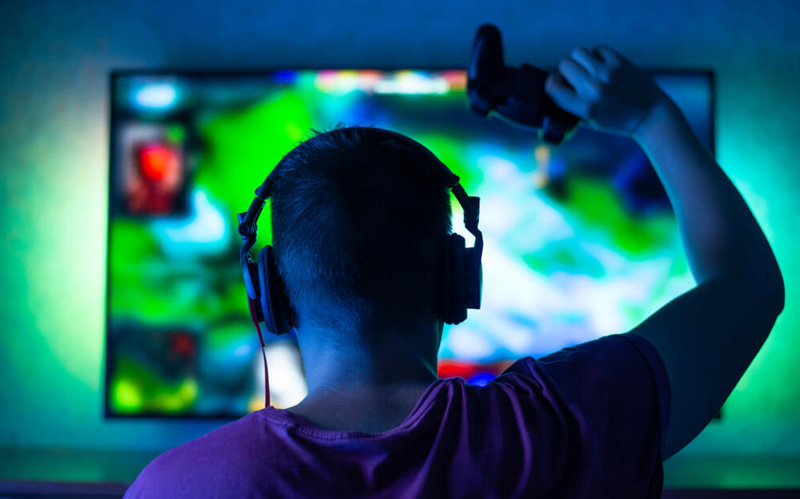
What my friends think I do

Why my parents think I do

What society thinks I do

What the players think I do
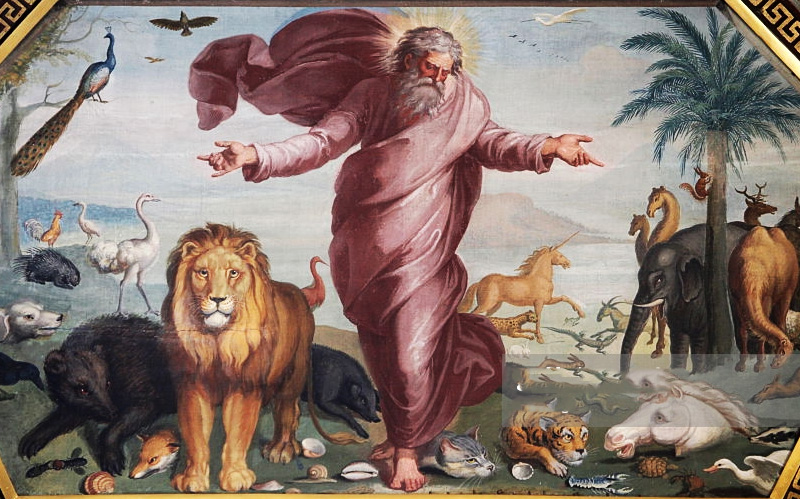
What I think I do

What I really do
I-wanna-be-a-game-developer starter pack
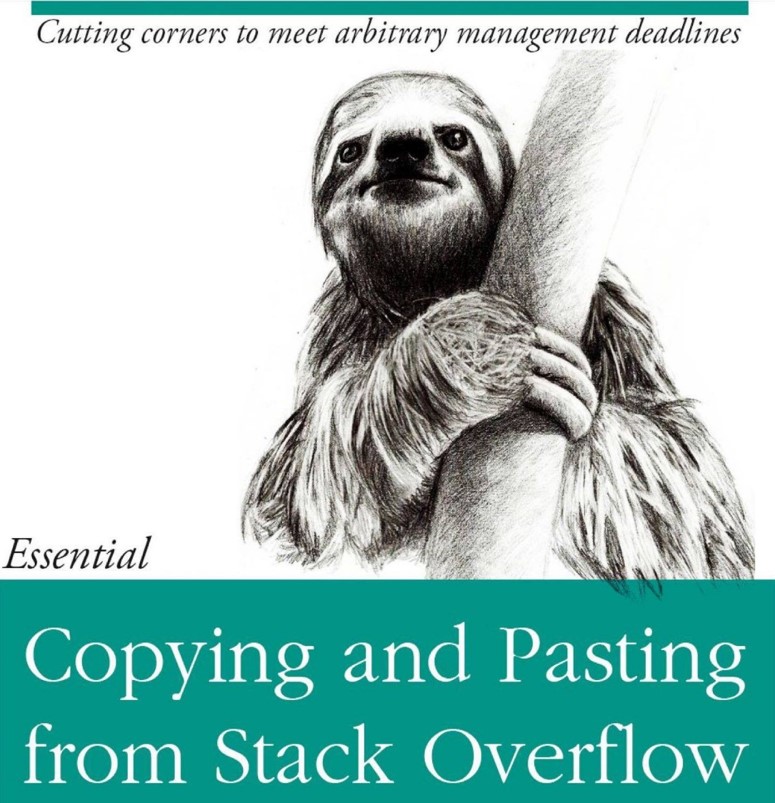

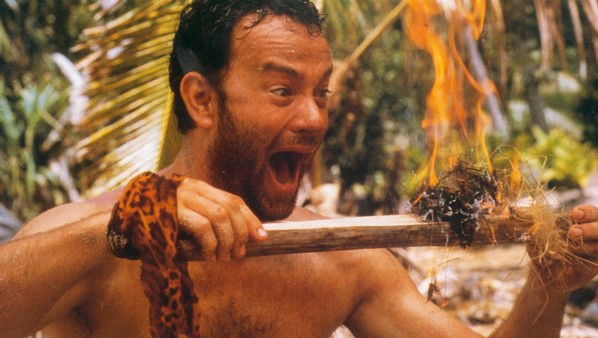
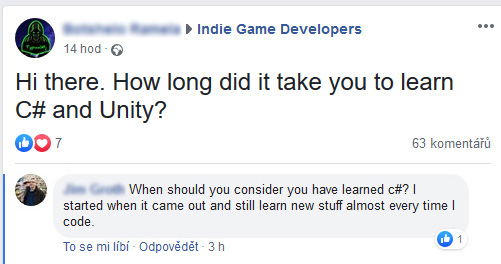
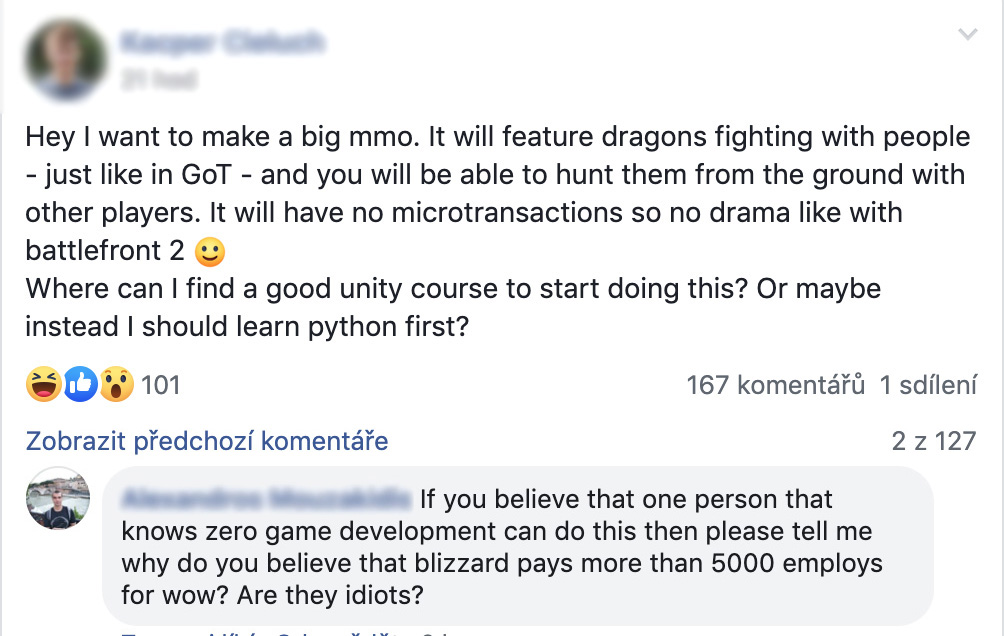
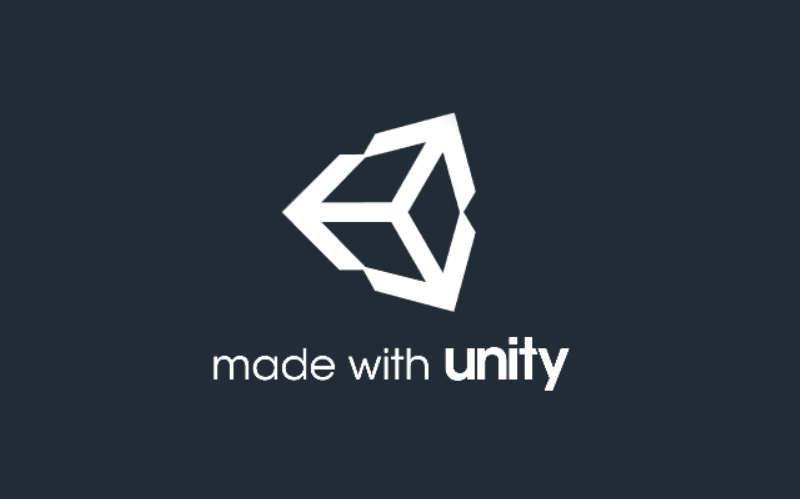
Game development
- serious games have very complex code, very complex user interactions, and a lot of decisions based on subjective views on top of coordination between art-focused and engineering-focused teams
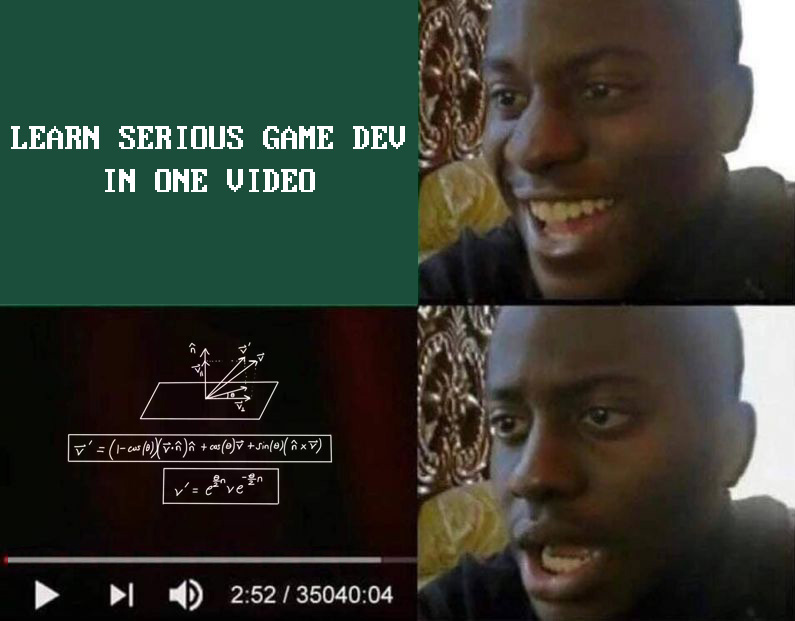
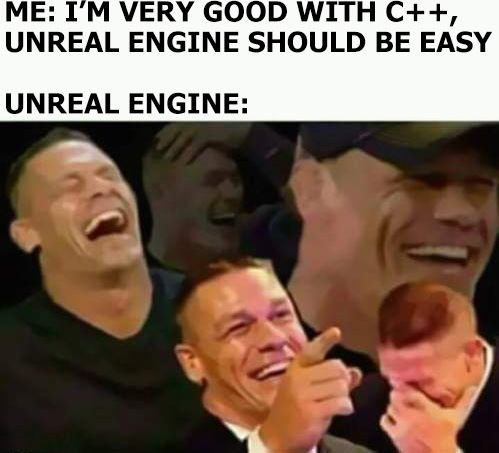
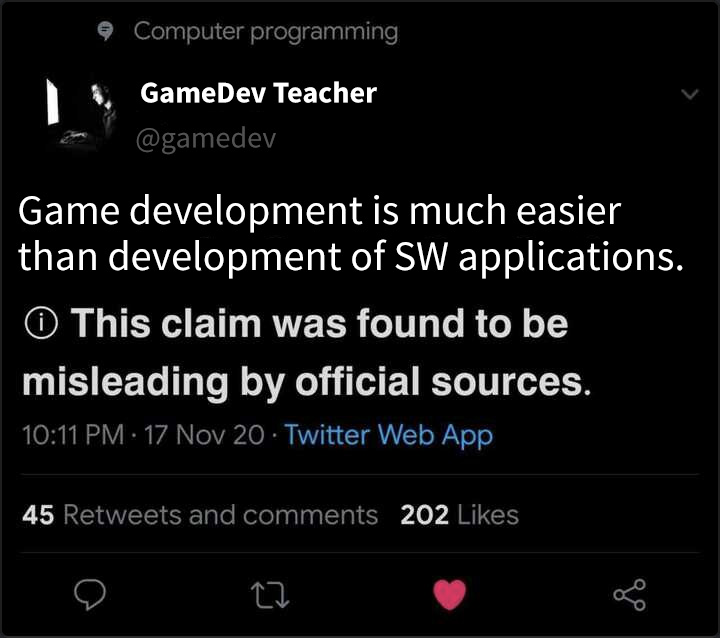
How to make a game
Stage 1
- create a few stupid simple games with little to zero budget
- learn how to use tools and game assets
Stage 2
- do your research
- make up good design hooks
- prepare a development plan
- prepare a concept
Stage 3
- get budget for 12 month of living + money for investments (assets, music,...)
- cut down on most unnecessary social interactions
- make a unique game that stands out
- don't tell your friends about your game until your prototype is finished
- if you run out of budget, get a job, and go back to step 1
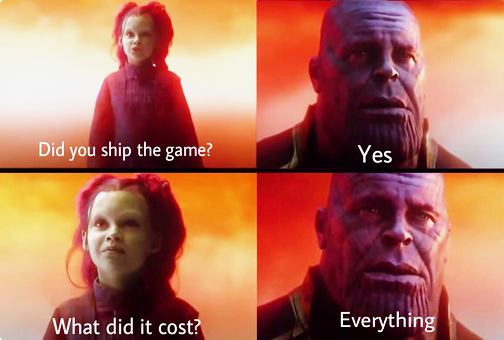
How Not to make a game
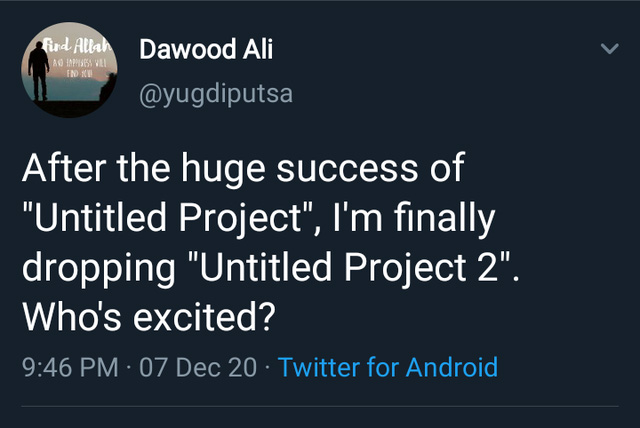
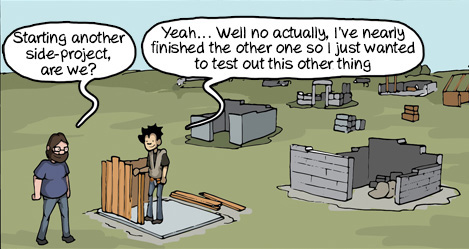
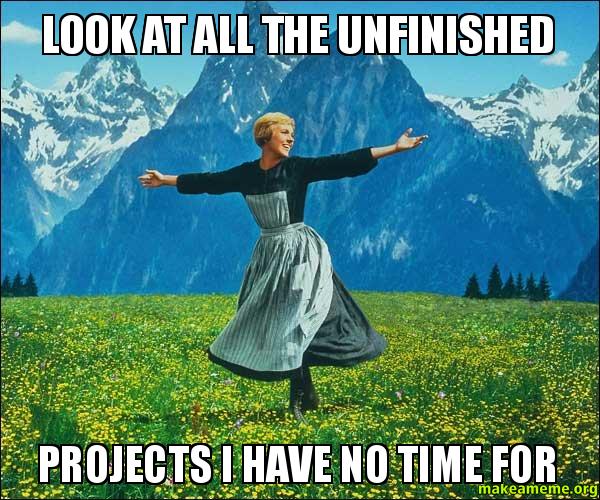
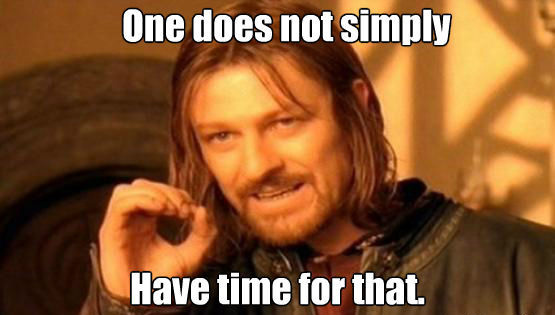
The iceberg illusion
Making successful games is about persistence and hard work, as well as being in the right place at the right time with the right concept.
Raison d'etre
- game development is a world with many heroes, a few stars and a very few superstars
- developers make games for the same reason why writers write books or painters paint paintings
- it is a way to leave creative footprints and express ideas to the world
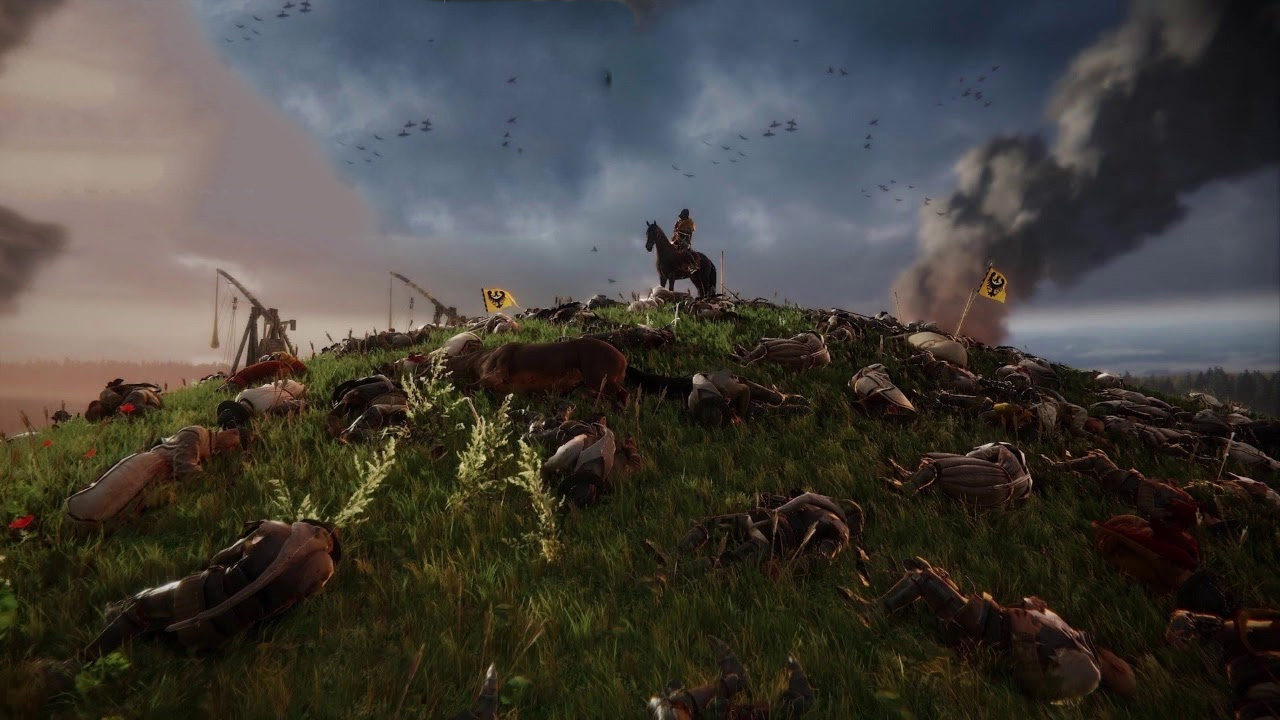
NI-APH legacy
- To learn basic elements of games
- To get familiar with the structure of game engines
- To learn something about component architecture
- To learn something about game physics, audio, graphics, AI, multiplayer
- To get familiar with basic elements of game design
- To comprehend how difficult game developent may become
- And, to gather enough knowledge that could be easily advanced further
- Online courses
- Youtube tutorials
- Open-source games
- Articles
- Books
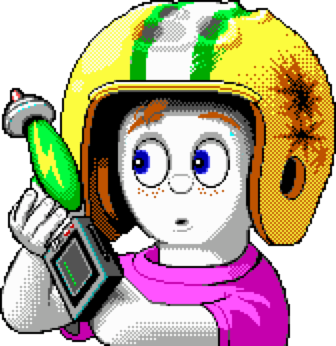
Goodbye Quote
What are you waiting for? Christmas?Duke Nukem
